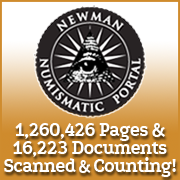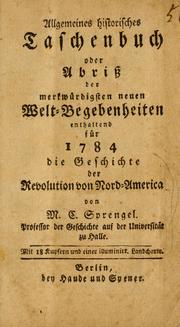
About UsThe Numismatic Bibliomania Society is a non-profit organization devoted to the study and enjoyment of numismatic literature. For more information please see our web site at coinbooks.org SubscriptionsThose wishing to become new E-Sylum subscribers (or wishing to Unsubscribe) can go to the following web page link MembershipThere is a membership application available on the web site Membership Application To join, print the application and return it with your check to the address printed on the application. Print/Digital membership is $40 to addresses in the U.S., and $60 elsewhere. A digital-only membership is available for $25. For those without web access, write to: Terry White, Treasurer AsylumFor Asylum mailing address changes and other membership questions, contact Terry at this email address: terrywhite5475@yahoo.com SubmissionsTo submit items for publication in The E-Sylum, just Reply to this message, or write to the Editor at this address: whomren@gmail.com BUY THE BOOK BEFORE THE COINSale Calendar |
- WAYNE'S WORDS: THE E-SYLUM OCTOBER 4, 2017
- KOLBE & FANNING SALE 147 CLOSES OCTOBER 7, 2017
- NEW BOOK: COINS OF QUEEN ISABEL II OF SPAIN
- NEW BOOK: 2017 CANADIAN NUMISMATIC RESEARCH SOCIETY TRANSACTIONS
- NEW BOOK: BOOM! AMERICA'S FIREWORKS INDUSTRY
- EL SITIO NO. 24 PUBLISHED
- JAMES WINSTON FAIRFIELD (1930-2017)
- NEWMAN PORTAL ADDS COMPTROLLER OF THE CURRENCY
- NEWMAN PORTAL SEARCH: BLACKSMITH TOKEN
- YOUR SMARTPHONE CAN ONLY BE SO SMART
- A LIST OF COIN DESIGNER WEB SITES
- NOTES FROM E-SYLUM READERS: OCTOBER 1, 2017
- ON THE ORIGINS OF THE CONTINENTAL DOLLAR
- OBSERVATIONS ON THE 1894-S DIME DISCOVERY REPORT
- ANOTHER RADIANT AMERICAN EAGLE GAMING COUNTER
- QUERY: ENGRAVED JOSIAH LIBBEY LIFESAVING MEDAL
- QUERY: MYSTERY WILLIAM HARRISON MEDAL
- QUERY: ALABAMA, MISSISSIPPI OBSOLETE BANKNOTES
- TWO-TAILED WASHINGTON QUARTER AUTHENTICATED
- VOCABULARY TERM: MEDALLIST, MEDALIST
- JEAN FABIEN MAUNOVRY (1878-1942)
- CONCORDIA EXHIBITS MARTIN LUTHER COINS AND MEDALS
- MONNAIE DE PARIS RENOVATIONS COMPLETE
- TRAVEL QUIZ REVIEW
- ANTI-COUNTERFEITING TASK FORCE ADDS WORK GROUPS
- MORE ON THE FRENT POLITICAL COLLECTION
- NUMISMATIC NUGGETS: OCTOBER 1, 2017
- THE CROCODILE COINAGE OF NEMAUSUS
- THE STAR AND CRESCENT ON ANCIENT COINS
- THE COLONIAL FRENCH SOL OF 1767
- ROYAL MINT TO RELEASE ISAAC NEWTON 50P COIN
- CURRIE CANADIAN VICTORIA CROSS SOLD
- BAHAMAS UNVEILS NEW ONE DOLLAR NOTE
- VEGAN RESTAURANT ACCEPTS ANIMAL FAT BANKNOTES
- FEATURED WEB SITE: RUSSIAN COINS CATALOG
Click here to access the complete archive
To comment or submit articles, reply to whomren@gmail.com
Content presented in The E-Sylum is not necessarily researched or independently fact-checked, and views expressed do not necessarily represent those of the Numismatic Bibliomania Society.
WAYNE'S WORDS: THE E-SYLUM OCTOBER 4, 2017
This week we open with two updates from Kolbe & Fanning numismatic literature booksellers, three new books and one periodical.
Other topics this week include dealer Jim Fairfield, Newman Portal updates and discoveries, coin designer web sites, more on that purported 1894-S dime discovery, a 1797 engraved lifesaving medal, Paris Mint renovations, crocodile coinage, and the Isaac Newton 50p.
To learn more about Isabel II of Spain, the Halifax Banking Company, Comptroller of the Currency Annual Reports, blacksmith tokens, the Wayback Machine, a two-tailed Washington quarter, George Washington Inaugural buttons, the 1964 St. Louis Bicentennial Medal, the colonial French sol of 1767, and the vegan restaurant that accepts animal fat banknotes, read on. Have a great week, everyone!
Wayne Homren
Editor, The E-Sylum
KOLBE & FANNING SALE 147 CLOSES OCTOBER 7, 2017
FINAL REMINDER & INSTRUCTIONS FOR KOLBE & FANNING'S OCTOBER 7 BOOK AUCTION
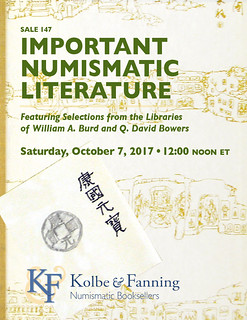 Kolbe & Fanning Numismatic Booksellers will hold Sale 147 this Saturday, October 7, 2017, beginning at 12:00 noon eastern time. Featuring material from the libraries of William A. Burd and
Q. David Bowers, the 500-lot sale covers ancient, foreign and U.S. numismatics.
Kolbe & Fanning Numismatic Booksellers will hold Sale 147 this Saturday, October 7, 2017, beginning at 12:00 noon eastern time. Featuring material from the libraries of William A. Burd and
Q. David Bowers, the 500-lot sale covers ancient, foreign and U.S. numismatics.
Bids may be placed via post, email, fax or phone, as well as online. Bids placed via post, email, fax or phone must be received by Friday, October 6, the day before the sale, in order for them to be processed. Kolbe & Fanning uses Auction Mobility as our third-party online bidding platform. Auction Mobility is an app-based platform allowing users the ability to participate in the sale through phones, tablets and computers. To register for the sale, bidders must go to bid.numislit.com and sign up. Once you have set up an account, you may browse lots, place advance bids, or participate in the live sale online. Those wishing to participate on their devices can download the Kolbe & Fanning app through the Apple or Google Play Store.
Advance absentee bids may also be placed online at bid.numislit.com; live internet bidding will be available during the sale itself through the same platform. Bidders placing absentee bids will be able to tell immediately whether or not they have the current high bid. Bidders will also receive email notifications when they are outbid before the sale (users of the app may receive push notifications as well).
Kolbe & Fanning Numismatic Booksellers LLC is a licensed and bonded auction firm in the State of Ohio. For more information, please see the Kolbe & Fanning website at numislit.com or email David Fanning at df@numislit.com. To register for the sale, go to bid.numislit.com. We look forward to your participation.
NEW BOOK: COINS OF QUEEN ISABEL II OF SPAIN
COINS OF QUEEN ISABEL II OF SPAIN
New Standard Work Now Available
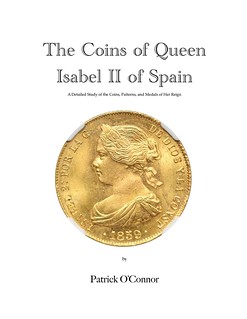 Kolbe & Fanning Numismatic Booksellers are proud to announce the availability of Pat O'Connor's new book The Coins of Isabel II of Spain: A Detailed Study of the Coins, Patterns,
and Medals of Her Reign.
Kolbe & Fanning Numismatic Booksellers are proud to announce the availability of Pat O'Connor's new book The Coins of Isabel II of Spain: A Detailed Study of the Coins, Patterns,
and Medals of Her Reign.
This exhaustive yet easy-to-use reference work covers all of the coins issued during her reign (1833-1868), providing full color illustrations of each coin type, information on rarity, metrology, designs and production, as well as current prices. In this book, the reader will find:
- a history of Spain leading up to and during Isabel's reign
- a brief biography of Isabel II
- Royal decrees and numismatic history that provide context to the coins of her reign
- information about each mint, assayer, and engraver
- a section on collecting and authenticating coins of Isabel II
- an extensive catalogue of coins, patterns, fantasies, and medals of Isabel II from Spain, the Philippines, and Cataluña, with the catalogue including photos of each coin type, listing by mint and date, rarity and valuations, and pertinent historical and collecting details in each entry.
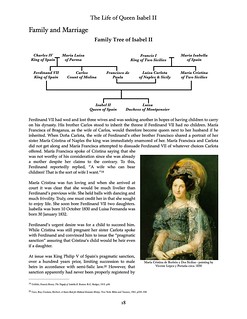
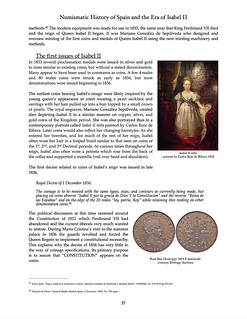
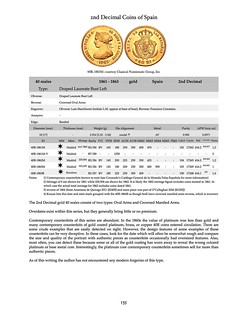 Anyone with an interest in the coinage and turbulent history of Spain in the mid-19th century is certain to find this book useful and enjoyable.
Anyone with an interest in the coinage and turbulent history of Spain in the mid-19th century is certain to find this book useful and enjoyable.
The Coins of Queen Isabel II of Spain is available exclusively from Kolbe & Fanning Numismatic Booksellers at numislit.com. The price of the hardcover, 294-page book is $135, which includes
free shipping in the U.S. (media rate); orders outside the U.S. sent at cost.
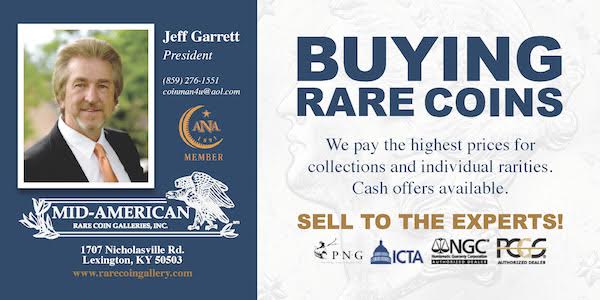
NEW BOOK: 2017 CANADIAN NUMISMATIC RESEARCH SOCIETY TRANSACTIONS
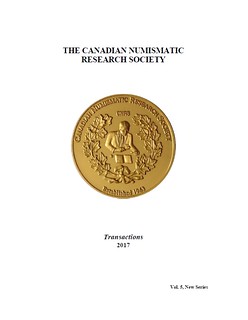 I'd like to make the readers of The E-Sylum aware of the Canadian Numismatic Research Society issue of the (New Series) Transactions Volume 5 for 2017. The contents include:
I'd like to make the readers of The E-Sylum aware of the Canadian Numismatic Research Society issue of the (New Series) Transactions Volume 5 for 2017. The contents include:
- A Guide for Contributors
- In Memoriam – Leslie C Hill Ron Greene
- An Early Document of the Halifax Banking Company Eric Leighton
- Those Other “Blacksmiths”: A Preliminary Listing of Period Cast Counterfeits of Colonial Coins and Tokens Christopher Faulkner
- A Collection of Canadian Swimming Awards Stan Clute
- Afterword Scott E Douglas
This year the Transactions is 62 pages, card covered and perfect bound.Shortly after the orders are assembled, as in the past, the edition will be mailed and that will be that. We do not plan on holding stock.
To order your copy please send a cheque or money order payable to
Scott Douglas for:
Canadian addresses (postpaid): $37 in Canadian funds or United States addresses (postpaid): $37 in US funds to:
Scott Douglas
273 Mill St. East
Acton, Ontario, Canada
L7J 1J7
Questions? Email Scott Douglas – sdouglas333@gmail.com
NEW BOOK: BOOM! AMERICA'S FIREWORKS INDUSTRY
New Book Includes Numismatics in a Behind-the-Scenes Look at American Pyrotechnics
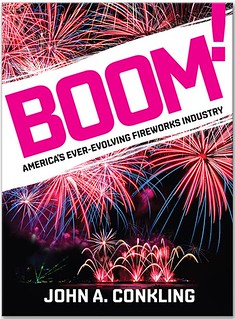 Whitman Publishing is releasing a new book by fireworks expert Dr. John Conkling. BOOM! America's Ever-Evolving Fireworks Industry will debut at the 69th Annual Meeting and
Convention of the American Pyrotechnics Association in San Diego, October 2–6, 2017. The richly illustrated 240-page hardcover book retails for $29.95. It can be pre-ordered from the publisher (at
Whitman.com) and will be available to the general public after the convention. A portion of its proceeds will benefit the APA's Safety & Education Foundation.
Whitman Publishing is releasing a new book by fireworks expert Dr. John Conkling. BOOM! America's Ever-Evolving Fireworks Industry will debut at the 69th Annual Meeting and
Convention of the American Pyrotechnics Association in San Diego, October 2–6, 2017. The richly illustrated 240-page hardcover book retails for $29.95. It can be pre-ordered from the publisher (at
Whitman.com) and will be available to the general public after the convention. A portion of its proceeds will benefit the APA's Safety & Education Foundation.
Whitman Publishing is best known for its books on numismatics (the study of coins, paper money, medals, and similar items), and some “heavy hitters” in the collectibles field opened their archives for the richly illustrated BOOM!. Q. David Bowers, known as the “Dean of Numismatics” and the most prolific hobby author of all time, contributed photographs of Civil War tokens struck for George Parsons of New York City, a fancy-goods and toy merchant who also was the New York agent for J.W. Hadfield's “First Premium Fireworks” in the 1860s. Stack's Bowers Galleries shared photographs of coins from 1906—a Barber half dollar, a Barber quarter, and a Liberty Head nickel—to accompany other artifacts from the 1906 San Antonio International Fair. The Fair included a “thrilling, realistic, spectacular” show of “The Fall of Port Arthur” (the longest and most violent land battle of the recently ended Russo-Japanese War), “terminating with a grand display of Manhattan Beach Fire Works nightly.”And Heritage Auctions, the world's largest collectibles auctioneer and a major presence in the rare-coin market, contributed photographs of colorful historical memorabilia including old posters, magazine covers, postcards, autographed portraits, comic strips, and other collectibles relating to fireworks.
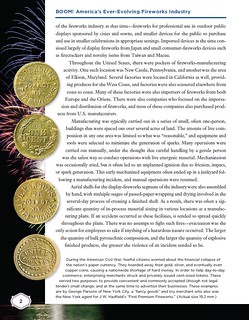
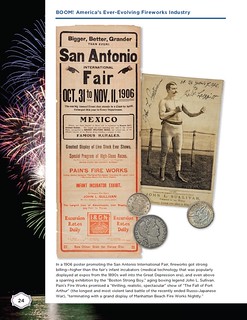
“We're constantly looking for opportunities to include numismatics in mainstream books,” said Whitman publisher Dennis Tucker. “BOOM! will be read by thousands of American history buffs. Our hope is that some of them might be drawn to the hobby by this exposure.”
Author John Conkling's experience in the field of pyrotechnics goes back to the 1970s. In 1971 he was an assistant professor of chemistry teaching at Washington College in Maryland. In 1972, he stepped partway out of academia into a whole new world of fascinating people and technology—the world of fireworks.
In BOOM! Conkling takes his readers behind the scenes and shares more than 45 years of hands- on experience in the American fireworks industry.
With a natural storyteller's warmth and humor—and with unique insight from serving the American Pyrotechnics Association as its executive director and technical advisor—Conkling gives an engaging history of fireworks in the United States since World War II. He shares stories of the industry's most famous personalities; his adventures traveling in China; the growth of federal regulations and the challenges they bring; and the innovations of American technology. He tells about the fireworks of yesterday, today, and tomorrow—and even gives advice on how to succeed in this booming entertainment field that brings joy to millions of Americans.
“I have had the unique opportunity to follow a fascinating industry through its transition into the 21st century,” writes Dr. Conkling. “I have met many interesting and unique people over the years, traveling extensively throughout this country as well as taking more than 40 trips to China on fireworks-related issues, and I have had a lifetime of fascinating pyrotechnic experiences. Here is my view of the journey.” More information on the APA's Annual Meeting and Convention can be found at www.AmericanPyro.com or by contacting Executive Director Julie Heckman at jheckman@americanpyro.com.
BOOM! America's Ever-Evolving Fireworks Industry
By John A. Conkling
ISBN 0794845541
Hardcover, 8.5 x 11 inches, 240 pages, full color
Retail $29.95 U.S.
For more information, or to order, see:
BOOM! America's Ever-Evolving Fireworks Industry
(https://www.whitman.com/store/Inventory/Detail/BOOM-Americas-Ever-Evolving-Fireworks- Industry+0794845541)
EL SITIO NO. 24 PUBLISHED
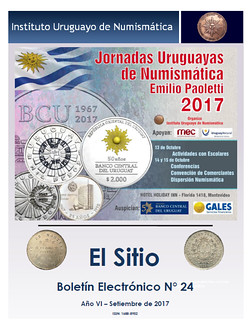 With the publishing of “El Sitio” N° 24, the electronic magazine of the Instituto Uruguayo de Numismática complied six consecutive years maintaining its quarterly frequency. This September
edition contains 26 pages, two numismatic articles and a lot of information. The cover of the “El Sitio” announces the “Jornadas Uruguayas de Numismática 2017”. This Numismatic Convention will be
held in the Holiday Inn Hotel, in Montevideo, Uruguay, on October 13th, 14th and 15th 2017. This year the Convention will bear the name of Emilio Paoletti, a well-loved and prolific numismatist,
deceased recently in Argentina where he lived more than 50 years.
With the publishing of “El Sitio” N° 24, the electronic magazine of the Instituto Uruguayo de Numismática complied six consecutive years maintaining its quarterly frequency. This September
edition contains 26 pages, two numismatic articles and a lot of information. The cover of the “El Sitio” announces the “Jornadas Uruguayas de Numismática 2017”. This Numismatic Convention will be
held in the Holiday Inn Hotel, in Montevideo, Uruguay, on October 13th, 14th and 15th 2017. This year the Convention will bear the name of Emilio Paoletti, a well-loved and prolific numismatist,
deceased recently in Argentina where he lived more than 50 years.
The first numismatic article, by Hugo Mancebo Decaux (“Hipótesis sobre el número de estrellas que lleva el Peso del Sitio en su reverso”) is related to the number of stars that the famous “Peso del Sitio” coin carries. The second one, by Horacio Morero Ferrero, presents the eighth series of “Identificando fichas de esquila” (“Identifying ranch tokens”). Morero's study says it is close to identifying 100 shearing tokens.
In addition, “El Sitio” gives us varied information about two new Uruguayan commemorative coins; new books and conferences in the Instituto Uruguayo de Numismática house.
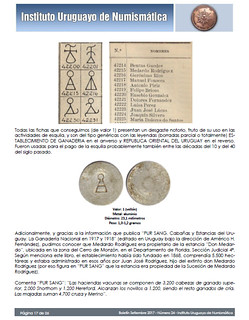
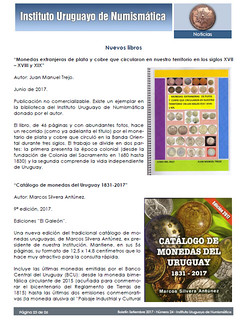
To read the complete issue online, see: http://iunuy.org/flop01/wp-content/uploads/elsitio/ElSitioN%C2%BA24.pdf
JAMES WINSTON FAIRFIELD (1930-2017)
JAMES WINSTON FAIRFIELD
FORT WAYNE, INDIANA
AUGUST 11, 1930 TO AUGUST 26, 2017
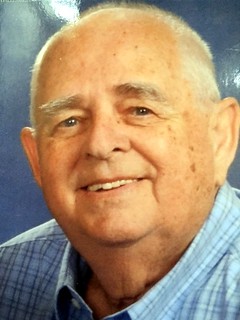 Jim discovered his affinity for coins while accompanying his mother on a shopping trip in the mid-1940's at a mezzanine level coin store in a local department store. He completed his
first collection, large cents within one year with wages from a neighborhood bakery at age 15. Large cents remained his lifetime favorite series. Dedication to the Army during Korean Conflict and
beginning a new life with his beloved wife, Helen were his main focus during the early 1950's.
Jim discovered his affinity for coins while accompanying his mother on a shopping trip in the mid-1940's at a mezzanine level coin store in a local department store. He completed his
first collection, large cents within one year with wages from a neighborhood bakery at age 15. Large cents remained his lifetime favorite series. Dedication to the Army during Korean Conflict and
beginning a new life with his beloved wife, Helen were his main focus during the early 1950's.
Jim's interest for coins was rekindled in 1956. He and like-minded friends formed the Old Fort Coin Club, and Jim became member #7. In 1958, he joined the A.N.A. and held life member #627. Jim continued to work tirelessly assisting in the formation of other clubs in Indiana and Ohio. Finally, Jim was a founding member of the Indiana Numismatic Association in 1959, holding membership #12.
Throughout the late 1950's and 1960's, Jim traveled to shows buying and selling. In 1969, Jim purchased “Art Coins” in downtown Fort Wayne. It became a family business with his mother, Dorothy and his son, Jim, Jr., working at the store.
From the 1970's to 2000's, the father/son team operated bourse tables at all the major shows. Jim had a quick smile, maybe a joke, and always fresh coins. In 1980, the downtown Fort Wayne urban renewal, and the creation of a Bank building prompted Jim to move the coin shop to a suburban location. At the East State Street location, Art Coins became Fairfield Rare Coins. Jim then joined the PNG in 1981. In 1989, Fairfield Rare Coins moved to its current location on Clinton Street. Worldwide travel was important and enjoyed by Jim and Helen, but foremost Jim was a family man. His whole family is proud of what a great family leader and numismatist he was.
At age 87, a week prior to his passing, Jim was working in the store on buffalo nickels and currency doing what he loved. He passed surrounded by his 7 children, 22 grandchildren and wife Helen of 66 years. A Christian celebration and U.S. military ceremony were held in honor of him at his lifelong church, Concordia Lutheran Church.
Gary Adkins writes:
Jim was a great guy. He was a man of honor and integrity and he loved his family dearly.
Ken Hallenbeck of Colorado Springs, CO writes:
Jim Fairfield and I go way back in 1957 when I moved to Fort Wayne, Ind; we were in the Old Fort Coin Club and later the Indiana State Numismatic Association.(ISNA). I still belong to the Old Fort Coin Club. Jim Sr. sold out to Jim Jr. but worked in the store, much as I do with my son, Tom.
To read Fairfield's online obituary, see:
In Memory of James W. Fairfield
(http://hockemeyer-miller.tributes.com/dignitymemorial/obituary/James-W.-Fairfield-105133096)
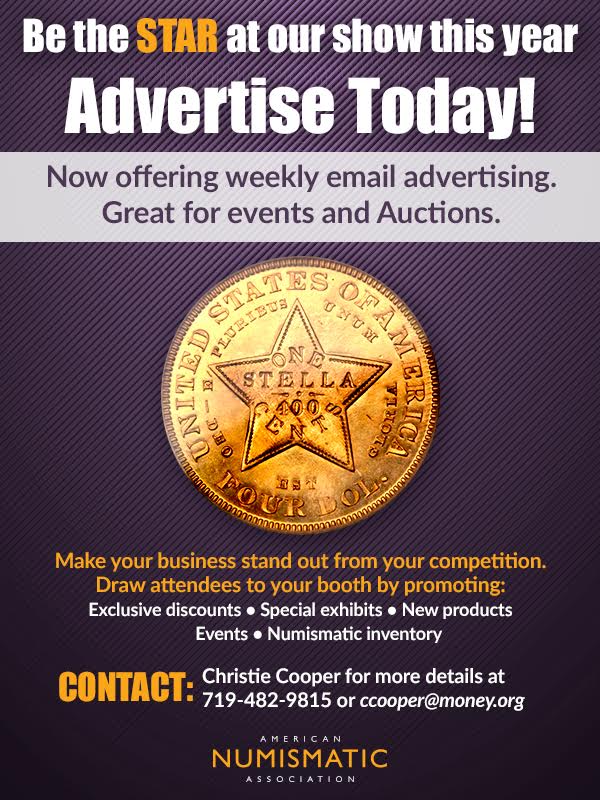
NEWMAN PORTAL ADDS COMPTROLLER OF THE CURRENCY
Newman Portal Adds U.S. Comptroller of the Currency Annual Reports
 The Legal Tender Act of 1862, authorizing $150 million in national “greenbacks,” along with the National Bank Act the following year, shifted control of the nation's currency from a
patchwork system of local banks to a centralized authority. The National Bank Act was hotly contested in Congress, with the issue of state vs. federal control always in the minds of legislators. The
1863 Act mandated an annual report from the Comptroller of the Currency, prior to this related information had been included in the annual reports of the Secretary of the Treasury.
The Legal Tender Act of 1862, authorizing $150 million in national “greenbacks,” along with the National Bank Act the following year, shifted control of the nation's currency from a
patchwork system of local banks to a centralized authority. The National Bank Act was hotly contested in Congress, with the issue of state vs. federal control always in the minds of legislators. The
1863 Act mandated an annual report from the Comptroller of the Currency, prior to this related information had been included in the annual reports of the Secretary of the Treasury.
The Comptroller reports included statistics on national banks, the legal tender supply, bank dividends and reserves, and all manner of odds and ends. The 1872 report complains about “shinplaster” notes issued by states in violation of federal banking law, apparently with the intent of escaping banking taxes. Summary data for the Mint detailing the annual coinage and bullion deposits is also found. The Newman Portal has added the Comptroller of the Currency annual reports for the years 1863-1980.
Newman Portal acknowledges FRASER, the digital library of the St. Louis Federal Reserve, for granting permission to reuse their existing digital scans.
Link to Comptroller of the Currency annual reports on NNP:
https://nnp.wustl.edu/library/publisherdetail/510306
Link to FRASER:
https://fraser.stlouisfed.org/
NEWMAN PORTAL SEARCH: BLACKSMITH TOKEN
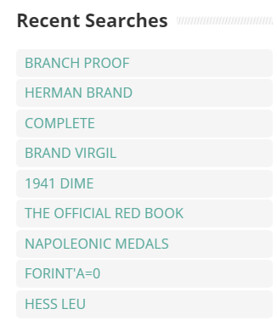 One of the things included on the Newman Portal (select any landing page under “Library” to view) is a running list of search terms entered into NNP. It's always interesting to see what
our users are looking for - one of the terms appearing this week was “blacksmith tokens,” a topic about which I know very little. An NNP search locates the Michael K. Ringo Blacksmith Token
collection cataloged in Stack's Bowers January 2013 sale, and here we learn that these tokens circulated as counterfeit halfpence in lower Canada, and that they are classified by “Wood”
numbers.
One of the things included on the Newman Portal (select any landing page under “Library” to view) is a running list of search terms entered into NNP. It's always interesting to see what
our users are looking for - one of the terms appearing this week was “blacksmith tokens,” a topic about which I know very little. An NNP search locates the Michael K. Ringo Blacksmith Token
collection cataloged in Stack's Bowers January 2013 sale, and here we learn that these tokens circulated as counterfeit halfpence in lower Canada, and that they are classified by “Wood”
numbers.
The NNP also finds the Colonial Newsletter, December 2014 (no. 156), and here Robert D. Leonard offers a formal definition – “The term ‘Blacksmith tokens' is simply a convenient label for crude imitations of older coins in circulation in Canada in the 1830, similar to the designation ‘Hard Times Tokens' for U.S. tokens of a slightly later period…..”.

Blacksmith token from Stack's January, 2010 sale
NNP further cites the Colonial Newsletter, December 2011 (no. 147), and here we find that the standard reference for these tokens was written by Howland Wood in the April 1910 Numismatist. This ten-page article details the die varieties and marriages in the series. Now it gets interesting – a check of auction catalogs on NNP reveals that the term “blacksmith token” appears only twice in auction catalogs prior to the 1910 Wood article – proving once again that there's nothing like a “standard” guide to spur interest in a series. After 1910 the term is found frequently in Thomas Elder auction sale catalogs, with occasional mentions in the B. Max Mehl catalog series as well.
To vist the Newman Numismatic Portal, see:
https://nnp.wustl.edu/
YOUR SMARTPHONE CAN ONLY BE SO SMART
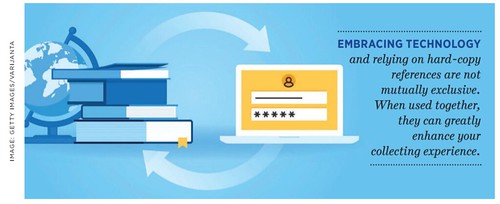
I couldn't help but notice two young men sitting next to me at a recent coin-club meeting, scouring through boxes of coins in 2 x 2-inch flips while they scanned their smartphones. They chatted with each other as they reached for specimens bearing asking prices below what the online guide stated they were worth. With striking smiles and shaking heads, they appeared satisfied as they chose coins that met the arbitrage driven by their mobile devices. I had to wonder what they were (really) doing.
As the evening wore on, it became clear that these two were following the same process with each collector and dealer at the meeting.
I asked if they were professional dealers, and with smiles they responded, “No! We're collectors.” I couldn't believe how often they opened their wallets and passed cash around.
What was striking was how willing the two young men were to exchange their cash for coins. (Granted, they could be very well off, and it might not have mattered how much they bought.) Still, finding values for the pieces came at the expense of truly studying and appreciating them. I saw the two unknowingly buy problem coins and those that were far from the grade their price guide apps listed.
I also noticed they were picking up quite a few colonial coins and assumed this area was their forte. Anyone who collects New Jersey copper or Massachusetts silver knows that it takes immense study of die states and hands-on inspection to really understand the different varieties, let alone authenticate them. When I asked if they had any experience with colonials, they shook their heads with a definitive “no.” As I continued to pry, their body language told me not to worry; they were scrolling through online guides to learn which varieties were the rarest and at what prices to purchase them.
I know the Internet and smartphone apps have replaced a lot of conventional wisdom and traditional book learning. I do not fight it and have a healthy collection of e-books and hours logged on the Newman Numismatic Portal to prove it.
But what collectors will find is that many of the best reference books on both classic and obscure topics rarely are digitized. Due to the amount of numismatic research out there and copyright laws, many never will be. That does not mean we should give up on our research; it does mean that we still need them.
I think the mantra “buy the book before the coin” is still relevant. You probably are tired of hearing it, but it does not limit you to traditional books; it is a reminder to educate yourself before opening your wallet. Impulse buys are great, but they often are even better when you know a little bit about what you're purchasing. I feel more confident cherrypicking varieties or under-graded coins after I have studied the series and know through reading books and discussing with other collectors that I am scoring a great deal for my collection or for resale.
For more information about the American Numismatic Association, see:
www.money.org
A LIST OF COIN DESIGNER WEB SITES
Citizens Coinage Advisory Committee
Dan Carr's Moonlight Mint
Thomas D. Rogers, Sr.
Heidi Wastweet
To read the earlier E-Sylum articles, see:
MORE NUMISMATIC DATABASE WEB SITES (http://www.coinbooks.org/v20/esylum_v20n38a11.html)
NOTES FROM E-SYLUM READERS: OCTOBER 1, 2017
Chopmarks on a US $20 bill
Terry Frazier of Missouri Valley, IA writes: 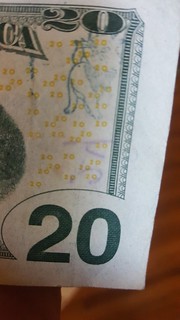
I found two chopmarks on a US $20 bill. The top one is cat looking back. I'm not sure what the other one is.
To read earlier E-Sylum articles, see:
CHOPMARKS ON MODERN U.S. PAPER MONEY (http://www.coinbooks.org/esylum_v17n07a21.html)
MORE CHOPMARKS ON MODERN U.S. PAPER MONEY (http://www.coinbooks.org/esylum_v19n23a31.html)
25 Silver Dollars for 25 Years of Marriage
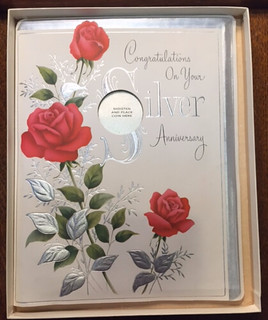
Early Munzen und Medaillen Listes
Numismatic literature dealer Douglas Saville of Reading, England writes:
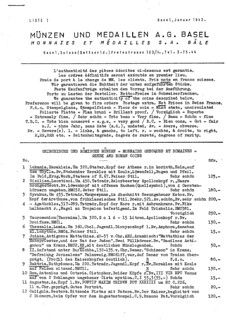 In the last E-Sylum you had a piece about the Cahn family. I have a few of the early Munzen und Medaillen Listes… including the first one, LISTE 1. Basel, Januar 1942. duplicated
typescript, A4 format, 8 pages. In it are listed for sale at fixed prices some 241 items including Greek, Roman, French gold, Holy Roman Empire gold, Swiss coins, medals, and the final page - the
“Bargain Page” - offers some 80 items priced from 50 Swiss cents up to 47 Swiss francs…..! It is part of a small collection of about 20 similar early M & M Listes that I have for sale.
In the last E-Sylum you had a piece about the Cahn family. I have a few of the early Munzen und Medaillen Listes… including the first one, LISTE 1. Basel, Januar 1942. duplicated
typescript, A4 format, 8 pages. In it are listed for sale at fixed prices some 241 items including Greek, Roman, French gold, Holy Roman Empire gold, Swiss coins, medals, and the final page - the
“Bargain Page” - offers some 80 items priced from 50 Swiss cents up to 47 Swiss francs…..! It is part of a small collection of about 20 similar early M & M Listes that I have for sale.
To read the earlier E-Sylum article, see:
ADOLPH EMIL CAHN (1839-1918) (http://www.coinbooks.org/v20/esylum_v20n39a13.html)
ON THE ORIGINS OF THE CONTINENTAL DOLLAR

On 'Continental Dollar' Origins
Bill Eckberg of Florida writes:
Regarding the Gorny & Mosch Fall Auctions 249-251 press release, the statement that the “Continental Dollar…was produced in the United States of America in 1776” is pure, unsubstantiated hype and speculation. ZERO evidence has ever published that these pieces were produced in the US, that they have any relationship to the Continental Congress, or even that they are supposed to be dollars.
There is way too much “received knowledge” in numismatics and way too little honest skepticism of it.
On the Origin of the Continental Dollars
Tony Terranova writes:
Does Eckberg have definitive proof that Continental dollars were not made in the US ?
I asked Bill Eckberg, who writes:
With all respect to my friend Tony, the burden of proof is on those who want to claim the Continental Currency coins were made in 1776 under the authority of Congress. Extraordinary claims like that require extraordinary evidence. I am only pointing out that I have never seen any evidence that these things have any connection to Congress or that they were made in 1776. Records DO say that a 1783 piece, likely the plain obverse quint, is “the first that has been made as an American coin.”
To read the earlier E-Sylum article, see:
NOTES FROM E-SYLUM READERS: SEPTEMBER 17, 2017 : On 'Continental Dollar' Origins
(http://www.coinbooks.org/v20/esylum_v20n38a16.html)
Tony Terranova writes:
The burden of proof is on those who are claiming it is not made in the US. The coins exist. If one wants to dispute there origins he or they should back up these new claims with proof.
On a whim I took a look in the Newman Numismatic Portal for early references to the coins. The only reference I found prior to 1800 is a 1784 German publication, a general history book by Matthias Christian Sprengel titled Allgemeines historisches Taschenbuch. The Portal notes that it is "Notable for an engraved plate illustrating the Libertas Americana medal and a Continental dollar, one of the earliest such depictions." Here's the plate. -Editor

To read the complete complete book on the Newman Portal, see:
Allgemeines historisches Taschenbuch ... (https://nnp.wustl.edu/library/book/519896)
To read the earlier E-Sylum articles, see:
GORNY & MOSCH FALL AUCTIONS 249-251 (http://www.coinbooks.org/v20/esylum_v20n37a24.html)
NOTES FROM E-SYLUM READERS: SEPTEMBER 17, 2017 : On 'Continental Dollar' Origins
(http://www.coinbooks.org/v20/esylum_v20n38a16.html)
NOTES FROM E-SYLUM READERS: SEPTEMBER 24, 2017 : On the Origin of the Continental Dollars
(http://www.coinbooks.org/v20/esylum_v20n39a10.html)

OBSERVATIONS ON THE 1894-S DIME DISCOVERY REPORT
As for the recent 1894-S dime report, you added "If you didn't read it quick, you missed it." But thanks to the "Wayback Machine" on the Internet Archive, the original article is still available.
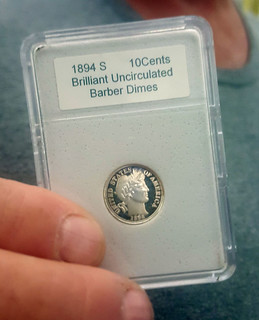 As you quoted, the Rapid City Journal's update (September 21, 2017) claims "However, the coin in the photo that accompanied the article was not purported to be the actual
dime that was sold."
As you quoted, the Rapid City Journal's update (September 21, 2017) claims "However, the coin in the photo that accompanied the article was not purported to be the actual
dime that was sold."
That is simply not true – the picture's caption definitively stated "A Black Hills man recently sold this extremely rare 1894-S Barber dime for $2.4 million." I repeat, "... sold this ... dime ..."
A few things which I found to be particularly "off the wall" are:
* The banker "agreed to open his financial institution's doors at 8 a.m., well before tellers and customers arrived".
* And at the behest of a person whom some might call "trailer trash"?
* But, after an appraisal of "nearly an hour", the tellers and customers would have been there to see the three men enter with the suitcases!
* The payment was in cash ($100 bills) - aren't there rules about reporting large transactions, especially cash, to inhibit money laundering?
* 8000 banknotes per suitcase, with contents of about 8kg to 9kg per suitcase – should have fitted into briefcases, or all into one suitcase!
* According to TV Tropes, "Assuming all US$100 bills, an average sized briefcase (25" x 18" x 4") could theoretically fit about US$2,400,000." But we'd better allow a little bit for the extra space occupied by used notes.
To read the complete article, see: Briefcase Full of Money (http://tvtropes.org/pmwiki/pmwiki.php/Main/BriefcaseFullOfMoney)
* No trace of toning, which would be surprising for a silver coin of that age – contrast the pictures of "known" specimens.
* The mintage was 24, not "some 2.5 million" - which admittedly would have been possible from the 40(?) dies delivered.
* The seller's father was given it, already "plastic-wrapped", "SEVERAL decades" before giving it to his son in 1964 – but he cannot have acquired it before 1945, and likely after 1950 ("the mid-20th century"), so held it for less than two decades.
* The reporter (Tom Griffith) must have expected the story to be picked up elsewhere, 'cos most readers of the Rapid City Journal shouldn't need to be reminded that the Black Hills (a national park some 30 miles away) is in South Dakota.
* “You cannot imagine how many banks I've visited in the last couple of weeks making deposits.” If more than 10, WHY?
* The ice-cream story is lifted from John Daggett's daughter Hallie. John died in 1919, so could not have been alive after World War II – and was not a banker, and even his alleged banker friends would have been well into their 80s (or even older) by the end of WWII.
* "a reputable private website favored by serious numismatists," And not known to ANY of our subscribers? or ANY contributors to the other sites?
Additionally, I really don't think Heritage would have told CNN of a production run of 2.5 million - and because of the financial crisis of the PREVIOUS year? Indeed, they didn't - CNN simply refers to (and misquotes!) a Heritage press release. See http://money.cnn.com/2016/01/08/luxury/dime-auction-2-million/index.html
"The San Francisco mint made about 2.5 million of these dimes, but fewer than 10 are still known to exist, according to Heritage. That's because a financial crisis in 1893 killed demand for new coinage, and almost all the dimes were melted down. Only 19 went into circulation."
They misquote a Heritage lot description which mentions the "nearly 2.5 million", but "in 1893"! So, after conflating the 1893-S production with that of the following year, CNN needed to invent the “melting” story – but the price of 1893-S dimes still reflects the mintage of almost 2.5 million.
To read the complete lot dscription, see: https://coins.ha.com/itm/proof-barber-dimes/
1894-s-10c-branch-mint-pr66-pcgs-secure-cac
/a/1231-5317.s?ic=ih-1984-Barber-Dime-clickImage-auction1231-121115
And several other sites have carried (or reworked) that CNN misquote.
Joel Orosz adds:
I consider myself to be an expert on two subjects--American numismatics and philanthropy. Invariably, whenever I have read a story written on these subjects by journalists outside the trade press for each subject, that story has been riddled with errors.
I suppose that whenever a generalist (as most journalists are), tries to write a story about a specialized subject, errors will inevitably be made. It makes me wonder about a lot of other stories I read in the press--not because of deliberate attempts to write "fake news" but simply because mistakes are made due to ignorance and lax fact-checking.
To read the complete article on the Wayback Machine, click this link, then scroll down:
Local
man's life changed by rare coin sold for millions (https://web.archive.org/web/20170917154849/http://rapidcityjournal.com/news/
local/local-man-s-life-changed-by-rare-coin->br/>sold-for/article_4a1bc9d6-f156-5cc3-a3d7-169db649a3f9.html)
The original article was here:
Sorry, the page you're looking for cannot be
found. (http://rapidcityjournal.com/news/local/local-man-s-life-changed-by-
rare-coin-sold-for/article_4a1bc9d6-f156-5cc3-a3d7-169db649a3f9.html)
To read the earlier E-Sylum articles, see:
ARTICLE REPORTS 1894-S DIME DISCOVERY (http://www.coinbooks.org/v20/esylum_v20n38a15.html)
ARTICLE ON 1894-S DIME DISCOVERY WITHDRAWN (http://www.coinbooks.org/v20/esylum_v20n39a09.html)
ANOTHER RADIANT AMERICAN EAGLE GAMING COUNTER
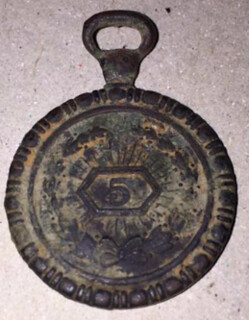
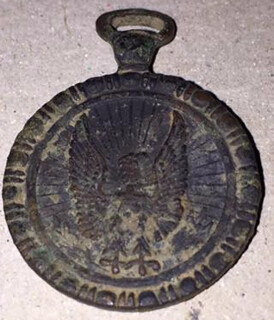
Web site visitor Kevin Krzeminski of Michigan writes:
I believe that I've found what your article states to be a Radiant Eagle Game Counter. I'd be curious if you'd be able to share any information/history on the relic I found.
Dave writes:
These things are well known, and as far as I know, no one has ever established that they are game counters. Actually, the fact that some of them have watch-stem loops at the top strongly suggests that they are not counters; why would a counter be looped?
The 1972 TAMS Journal supplement, “American Game Counters,” which was written by Russell Rulau and George Fuld, devotes an entire page to the various varieties of these pieces, six of which have the number “5.” Some of the varieties are common; somewhere I have three or four of one type.
To read the earlier E-Sylum articles, see:
QUERY: UNKNOWN COPPER TOKEN IDENTIFICATION SOUGHT (http://www.coinbooks.org/esylum_v13n19a16.html)
UNKNOWN COPPER COIN IDENTIFIED AS AMERICAN GAMING COUNTER (http://www.coinbooks.org/esylum_v13n20a16.html)
MORE ON THE RADIANT AMERICAN EAGLE GAMING COUNTER (http://www.coinbooks.org/esylum_v16n17a12.html)
QUERY: ENGRAVED JOSIAH LIBBEY LIFESAVING MEDAL

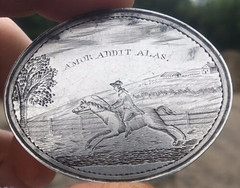
Paul Galotti of Northampton, Massachusetts writes:
I am writing because I stumbled on an E-Sylum article about engraving styles and early medals. I had some great fortune recently and was able to purchase the attached 18th century silver life-saving medal from a gentleman that found it using a metal detector.
I have done extensive research in old newspapers and many other locales to try to identify the engraver of the piece. I have strong reason to believe it was done by Mr. Joseph Callender. But other possibilities include Paul Revere Junior and Joseph Loring. I am also curious about Reveres work and suspect that some of the work that has been attributed to Revere may have actually been engraved by Callender.
The entire story of the rescue related to the award of this medal is documented. The major rode 10 miles on his horse in 30 minutes to retrieve a doctor to revive a drowned child. I'm looking for any insights I can get.
QUERY: MYSTERY WILLIAM HARRISON MEDAL
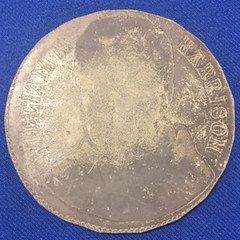

I reached out to Alan V. Weinberg, who writes:
The medal is a muleing of an old 1860s WHH fantasy medal with a World War I medal depicting WWI charging soldiers, Ms Liberty / Victory and a screw press coinage mechanic.
Dewitt/Sullivan pictures it on page 620 as WHH-B as a political fantasy struck in the 1860s by C. Wyllys Betts with the obverse struck in WM and lead muled with several reverse dies. Geoff's medal is circa 1918-20 from a well worn deteriorated WHH fantasy die and has nominal curiosity value
QUERY: ALABAMA, MISSISSIPPI OBSOLETE BANKNOTES
A couple years ago some of the E-Sylum readers helped me identify several European medals. The auction firm I work part time at, Alex Cooper in Baltimore, took in a consignment of 45-50 obsolete currency notes last week. I took photos of 1/3 of them to study at home. Several have been difficult to pin down.
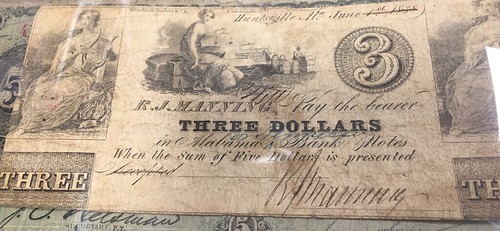
The first note has a well-known issuer – RJ Manning of Hunstville Alabama, usually 1838 but this denomination I cannot find. The RJ Manning notes of 6 ¼c, 12 ½ c, 25c, 50, $1 and $2 are easy to find references for, this $3 note is not listed in the Rosene book of Alabama script notes, and has not appeared in any auction that I can find. It is a 2-state note as it was also redeemable in Tennessee.
Dennis Schafluetzel is doing a Tennessee database for the SPMC and he gave me access to his database in progress – one mention of a smaller denomination and plenty of Heritage auctions but nothing in $3.

The second note is from Columbus Mississippi and a bank I can find no reference to. There have been no sales of a note like this at Heritage or a number of other auction sites. The only positive I've had so far is that Tom Denly told me it was a R-7 Bank and the President (EF Calhoun) matched what his information said. It is apparently a scrip note good at the exchange bank but not a real note.
TWO-TAILED WASHINGTON QUARTER AUTHENTICATED
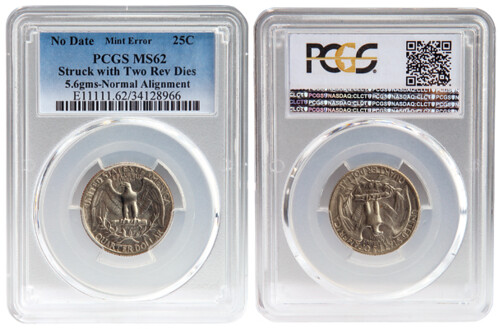
PCGS has certified the third-known.two-tailed-Washington quarter dollar as Mint State 62.
The Washington quarter dollar struck with two reverse dies reported by an error coin dealer has been authenticated and graded by Professional Coin Grading Service. The grading service has also certified a Proof 1968-S Washington quarter struck in 90 percent silver instead of the intended copper-nickel clad composition.
Both U.S. coin errors struck at the San Francisco Mint in the 1960s were submitted to the grading service by error coin dealer Fred Weinberg of Fred Weinberg & Co. in Encino, Calif. The coins came from different sources.
The two-tailed Washington quarter dollar is only the third known such error struck with two Eagle reverse dies. Weinberg purchased the coin from a collector during the Sept. 7 to 9 Long Beach Expo in Long Beach, California.
The coin is struck with normal die alignment on the intended copper-nickel clad planchet composed of outer layers of 75 percent copper and 25 percent nickel bonded to a core of pure copper.
The coin's weight is 5.6 grams, slightly lighter than the 5.67-gram standard.
Production of the two-tailed Washington quarter dollar is believed to have been executed at the San Francisco Mint between 1965 and 1967.
To read the complete article, see:
PCGS certifies two-tailed quarter, plus a 1968-S quarter on 90 percent silver
planchet (http://www.coinworld.com/news/us-coins/2017/09/pcgs-certifies-two-tailed-washington-quarter-dollar.html)

VOCABULARY TERM: MEDALLIST, MEDALIST
Medallist, Medalist. A designer, engraver, maker or collector of medals; one knowledgeable in medals; also a recipient of a medal. As a creator of medallic art, the medallist must not only be a highly creative artist but also know the many techniques in the field. This talented person must be proficient in producing the patterns required for any medallic item and the working knowledge must include design, relief, the capabilities and limitations of die striking and art casting, and, certainly, patina finishes.
The first medallist was Pisanello, who in 1438 created the first sculpture of what was to be called a pendant medal, a portrait of John Palaeologus. Early medallists had to prepare the entire production of a medal, from pattern to casting the final item, and to patina it. They had to know, and do, every step themselves.
With the introduction of the screw presses for striking coins, in 1530, medals were also struck, but the diameter was necessarily small. Few medallists existed at this time. Those that did had to do their own engraving, by hand, and had some mint strike their creations. Thus medallists were concentrated at the national mints of Italy, France and England. One enterprising medallist from Belgium (a doctor!), Joseph Pierre Braemt (1796-1864) in 1824 even developed his own reducing machine, where he could model oversize and cut a medal die on his machine. Medallists since then have increased in number, as the appeal and demand for medallic art spread. It should be noted however, medallists have always been resourceful. This is lessened somewhat today with the ease of having private mints and medal makers produce what the medallist creates in his own workshop.
Famous medallists. In addition to Pisanello, famous early medallists include Donatello, Leonardo da Vinci, Benvenuto Cellini, Leone Leoni, all Italians, and somewhat later, the German engraver Albert Durer. In England Benedetto Pistrucci and the Wyon family of engravers were most noted. French medallists of note is quite lengthy, but mention should be made of David d'Angers, Augustin Dupré, Charpenter, Louis Roty, others. In America: Augustus St-Gaudens, Daniel Chester French, Guston Borglum, Herbert Adams, Laua Gardin and James Earle Fraser, Paul Manship, Frederick Macmonnies, Victor David Brenner, Anna Hyatt Huntington, many others, were famed for their medallic work.
For other meanings of medallist see MEDAL COLLECTING and RECIPIENT. The word is spelled with one or two lls – both are correct.
CLASS 13.1
Looking for the meaning of a numismatic word, or the description of a term? Try the Newman Numismatic Portal's Numismatic Dictionary at: https://nnp.wustl.edu/library/dictionary
JEAN FABIEN MAUNOVRY (1878-1942)
 Jean Fabien Maunovry (1878-1942), was born on June 27, 1878 at Paris, France. He immigrated to America in 1900 and settled in Denver, Arapahoe, Colorado. He claims he purchased a hoard of
Lesher silver dollars while living at Denver in 1905 as reported in 1918 by Farran Zerbe.
Jean Fabien Maunovry (1878-1942), was born on June 27, 1878 at Paris, France. He immigrated to America in 1900 and settled in Denver, Arapahoe, Colorado. He claims he purchased a hoard of
Lesher silver dollars while living at Denver in 1905 as reported in 1918 by Farran Zerbe.
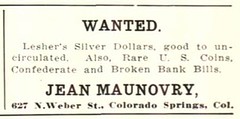 Maunovry was a coin and stamp dealer who traveled and moved to at least eight cities including in chronological order: Denver and Cascade, Coloardo, Saint Louis, Missouri, Detroit,
Michigan, Akron, Ohio, Rochester, New York, Livingston, Montana, and Colorado Springs, Colorado, running newspaper ads buying collectibles, particularly coins, and was arrested for fraud doing it. It
is possible he was arrested several times though we know for certain he served prison time at least once for mail fraud
Maunovry was a coin and stamp dealer who traveled and moved to at least eight cities including in chronological order: Denver and Cascade, Coloardo, Saint Louis, Missouri, Detroit,
Michigan, Akron, Ohio, Rochester, New York, Livingston, Montana, and Colorado Springs, Colorado, running newspaper ads buying collectibles, particularly coins, and was arrested for fraud doing it. It
is possible he was arrested several times though we know for certain he served prison time at least once for mail fraud


On July 30, 1912, he married Claire Therese Grace Fenner (1877-), the recent widow of Clark C. Fenner (1855-1911), a woodman. Soon afterwards they moved to Detroit, Michigan, and then to St. Louis, Missouri. A few years later he moved to Rochester, New York where he worked as a baggageman at American Express, New York Central Station.
1914 was an exciting year for Maunovry and his wife. New Year's Day he captured the attention of St. Louis, Missouri with his so-called visit there and made comments about the newly discovered 1804 Silver Dollar found at New Haven, Connecticut. But by the close of that same year he was seen as a villain.

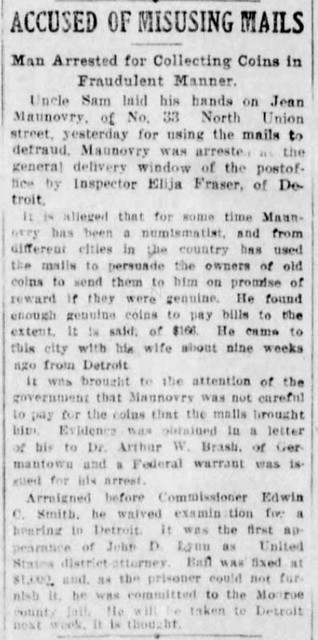
On January 5, 1918 he is listed as a member of the ANS, Rochester, New York. In the Rochester City Directory (1919) page 703, he is listed as a Coin and Stamp Dealer.
On his 1920 U. S. Census record at Akron, Ohio, he claims to have become a naturalized citizen of the United States in 1906, yet his 1918 Draft record records him as an alien under French rule.
In 1920 Maunovry moved to 209 Milldred Avenue, Akron, Ohio, and then in a few months moved to 627 North Weber Street, Colorado Springs, Colorado.
On September 21, 1921 he vanished into thin air since again he was under investigation for fraud. His last address was 422 East Kiowa, Colorado Springs, Colorado. The ANS Proceedings of 1922 lists him as living at Livingston, Montana.
In 1942, in the Colorado Springs City Directory page 267 he and his wife Claire are listed at 215 Pueblo Avenue, Colorado Springs, Colorado.
On May 15, 1942 Claire G. Maunovry filed a request for proof of husband's naturalization since it was required for application to receive Old Age Pension. It is unclear if the report is filed as perjury. It is assumed he died at that time. His death and burial or cremation are uncertain at this time.
To read the complete article, see:
MAUNOVRY, JEAN FABIEN
(https://sites.google.com/a/numismaticmall.com/www/numismaticmall-com/maunovry-jean-fabien)
The entire inventory of the Lupia Numismatic Library is for sale. Since neither the Chapman Family Correspondence Archive as a whole nor that of Hiram Edmond Deats could find an institutional or private buyer they shall, unfortunately, be broken up into parcels and sold from the NumismaticMall.com.
Every item in the Deats and Chapman Archives will be sold to anyone bidding a fair market price. Individual items will be available before the remaining archives are broken up into parcels sold at philatelic auctions in the U. S. and Hong Kong.
Check NumismaticMall.com frequently as dozens of new items with estimates will be posted daily beginning August 21, 2017 until everything is sold lock stock and barrel. Many treasures and surprises will be found, so keep looking.
All inquiries will be given prompt and courteous attention. Write to: john@numismaticmall.com .
CONCORDIA EXHIBITS MARTIN LUTHER COINS AND MEDALS
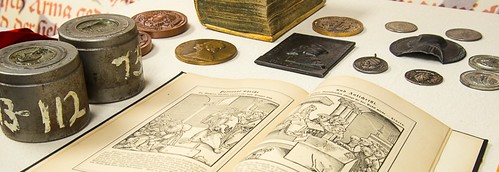
Concordia Historical Institute, located on the campus of Concordia Seminary in Clayton, Missouri, announces a major exhibit of rare books and coins documenting the 500-year history of the Reformation. Under the title “Pressed into Service by the Word of God,” this special exhibit will explore—through books and coins—the history of Martin Luther (1483–1546) and the Reformation that began on October 31, 1517.
For 500 years, both the printing press and the coin press have given witness to the truths of the Word of God rediscovered. But more importantly, the exhibit will focus on men and women pressed into service for the sake of Christ and the Gospel. The focus of the exhibit is summed up by Martin Luther's confession at the Diet of Worms on April 18, 1521: “I am bound by the Scriptures I have quoted; my conscience is captive to the Word of God.”
The public is invited to attend the official opening of the exhibit on Saturday, February 18th, 2017 (10:00 AM – 4:00 PM) at Concordia Historical Institute, 804 Seminary Place, Clayton, Missouri 63105. Tours of the CHI archives will also be offered on February 18th.
“This is a special opportunity to view choice books, coins and medals—some from the 16th and 17th centuries—from Concordia Historical Institute's Rare Book Collection and Reformation Coin and Medal Collection.” notes CHI Executive Director Daniel N. Harmelink. “These artifacts are rarely on exhibit and have been hand selected to give a fresh and challenging perspective on the Reformation and its on-going influence over the last 500 years.”
After opening day, regular exhibit hours will be Mondays through Fridays (9:30 AM to 3:30 PM).
The exhibit is suitable for not only adults but also youth—especially students taking classes for First Communion or Confirmation.
Special lectures and an exhibit catalog are scheduled for later this year.
To read the complete announcement, see:
http://concordiahistoricalinstitute.org/pressed-into-service-by-the-word-of-god/
To read the CoinsWeekly article, see:
CHI exhibits coins and medals from Luther's time
(http://www.coinsweekly.com/en/News/CHI-exhibits-coins-and-medals-from-Luthers-time/4?&id=4952)
MONNAIE DE PARIS RENOVATIONS COMPLETE
After 6 years of work, the transformation works at the Parisian site of Monnaie de Paris concluded to give birth to 11 Conti - Monnaie de Paris. Completely renovated, Monnaie de Paris reveals its ambitious project and invites visitors to discover a museum dedicated to the theme of minting, artisan crafts, but also dedicate to exceptional heritage collections.
Since 1775, the Parisian site of Monnaie de Paris site has been established at 11 Quai de Conti in the heart of the 6th arrondissement. Taking the name of its historic location, the Monnaie de Paris opens 11 Conti - Monnaie de Paris.




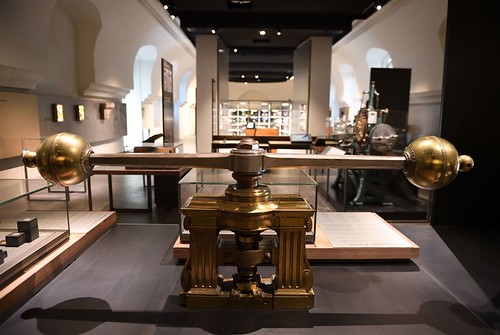
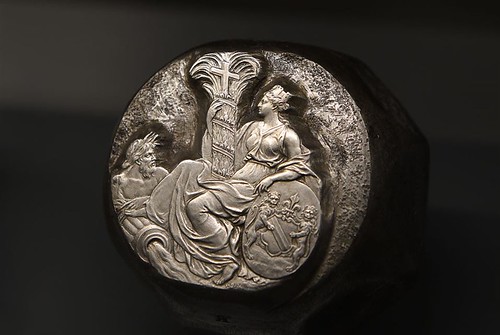
To read the complete article, see:
http://artdaily.com/news/99062/La-Monnaie-de-Paris--The-last-secret-in-the-heart-of-Paris-finally-opens-its-doors
(http://artdaily.com/news/99062/La-Monnaie-de-Paris--The-last-secret-in-the-heart-of-Paris-finally-opens-its-doors#.WconjGhSyAs)
For more information, see:
https://www.monnaiedeparis.fr/
https://www.monnaiedeparis.fr/en/expositions-permanentes/create
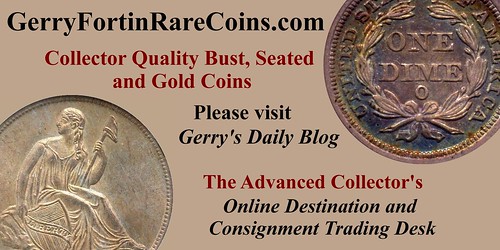
TRAVEL QUIZ REVIEW
A couple weeks back, Pablo Hoffman challenged E-Sylum readers to...
Attention Lexinumiscryptographers:
You say you've been all over the world? Great!
Take a “Travel Quiz,” which has ten different letters. Use any or all of these letters to spell names of coins or denominations of money from any country, any era, any language, singular and/or plural.
Each letter occurs only once in “Travel Quiz,” so you can use a letter only once in each name. For example, “quarter” doesn't work because it has two Rs. No slang, nicknames, abbreviations or symbols.
Martin Purdy of New Zealand writes:
Interesting to see the list of words drawn from TRAVEL QUIZ, and to see I found a couple the compiler missed :-) The longest list contains some oddities, though - AS and REAS would have to be discounted since there's no S there that I can see.
Good game, in any case. I repeated it on the Royal Numismatic Society of New Zealand's Facebook page and didn't get a single response. Some folks clearly have no sense of fun.
Ron Haller-Williams writes:
We all missed the tin TRA dated AH1224 of Kedah (now part of Malaysia, NNW of Singapore), also the Turkish 18th-century gold ZERI (or ZERI MAHBUB, which is said to translate as "beloved gold"), which weighed about 3 grams. But I'd love to learn a bit about the AT and TAL submitted by Pablo (who set the quiz) – I presume the RAI is/are from the South Pacific island of Yap?
It occurred to me that we're all feeling the strain of our full-time day job: saving the world from Evil. A quick look at the headlines shows that we're not doing well at it. So . . . I thought a little break would do us good, a momentary wordful divertissement was in order, and Wayne was good enough to indulge me. Hence, the “Travel Quiz.”
T R A V E L Q U I Z
At Equals 1/100th of one Laotian kip. Fractional notes of 10 at, 20 at, and 50 at were issued in 1945. The language of Laos is Lao, in the Tai-Kadai language group.
Lari Replaced the old Kuponi denomination in the Republic of Georgia in October, 1995. The lari is the equivalent of 100 tetri. Its international symbol is ? .
Lat The English name for the lats, the official currency of Latvia until 31 December 2013. It was replaced by the euro on 1 January 2014. Lat is singular, as is lats. It is divided into 100 santimu.
Lati Plural of lats in quantities of 2 to 9; found on the 5 lati note only
Latu Plural of lats in quantities of 10 or more; found on all other notes.
Leu Singular form of the Moldovan and Romanian currency unit. One leu equals 100 bani. The name leu derives from the Dutch leeuwendaalder coin, or lion thaler, first minted in 1575. This large silver piece owed its name to an image of a rampant heraldic lion (in Dutch, “leeuw”) prominently depicted in its Dutch coat-of-arms. “Leeuw” became abbreviated to yield the Balkan denominations of leu and lev.
Lei Plural of the Romanian leu.
Lev Introduced as Bulgaria's currency in 1881, with a value equal to the French franc.
Leva Plural of lev.
Lira The monetary system of the Roman Empire was originally based on the libra, Latin for the value of a troy pound of approximately pure silver. The term was subsequently translated into local languages. In current use in Jordan, Lebanon, Syria, and Turkey, and in Bulgaria, Egypt, and Romania as translation of the British pound; in Croatia as translation of the Italian lira. Formerly used in Cyprus, Israel, Italy, Italian East Africa, Italian Somaliland, pre-unification Italian kingdoms, states, and republics, Malta, Ottoman Empire, San Marino, Tripolitania, Vatican City, and elsewhere.
Lire Plural of lira
Litu Plural genitive form of the Lithuanian litas (singular,) the currency of Lithuania until 1 January 2015, when it was replaced by the euro.
Livre Denomination introduced in the late eighth century by Charlemagne, unifier of Western Europe into the Carolingian Empire. Livre was the French translation of the Roman Empire's libra (see Lira, above.) It was a standard currency in metropolitan and colonial France until displaced by the franc in 1795.
Quetzal Created in 1925, and named for Guatemala's national bird, the resplendent quetzal, whose magnificent tail feathers had been used as currency by the ancient Mayan inhabitants of Meso-America.
Rai The rai are calcitic limestone discs in varied sizes, from less than an inch and a half to twelve feet in diameter. Their weight varies between a mere few ounces to almost 9,000 pounds. They have been used as ritual currency on the island of Yap for over a thousand years. Although the U S dollar is now in everyday usage by the Yapese, rai are still utilized in traditional ceremonial interchanges. Yap is now part of the Caroline Islands in the Federated States of Micronesia, in the western Pacific Ocean.
Real The Treaty of Tordesillas, signed on June 7, 1494, divided the newly discovered lands outside Europe between the Portuguese Empire and the Crown of Castile. The silver real was the currency of the Spanish colonies in America and the Philippines. The first Portuguese settlers in the Americas brought with them the use of the Portuguese real in the 1500s.
The native Brazilian real originated in 1654, during the Dutch occupation of the northeast region of Brazil. On 1 July 1994, Brazil eliminated the cruzeiro and introduced the modern real as its official national currency.
Rial Unit of currency in many Middle Eastern and North African countries. The term is written as rial or riyal, and derives from the Portuguese real. Some of its issuers, past and present, are Hejaz, Iran, Morocco, Muscat & Oman, Oman, Qatar, Qatar & Dubai. Saudi Arabia, Tunisia, and Yemen.
Riel The national currency of Cambodia. The term is translated into Khmer, the official language of Cambodia, from the Spanish-American and Mexican real, one of the most widely accepted currencies in Southeast Asia for hundreds of years. An alternative interpretation for the origin of the term is that it is adapted from the riel, a small fish. Commonly referred to in Khmer as trey riel, or the “money fish,” it provides a livelihood for tens of millions of Cambodians, who annually harvest millions of pounds of the diminutive carp-like fish from the Tonlé Sap lake and river systems, major tributaries of the immense Mekong River, one of the world's most ecologically and economically important waterways.
Tael The tael is the basic unit of a complex interrelated system of weight and currency equivalents, likely originating in Ta'ng Dynastry China during the 7th Century AD. The English word tael entered the language from Portuguese, which absorbed it from the Malay word tahil, or weight. The tael, or tahil, is today still in use, albeit adapted to a myriad of differing market quantifications, in Brunei, Malaysia, and Singapore, as well as in financial transactions in mainland China, Hong Kong, Taiwan, Japan, and Vietnam, and in local population nodes of the vast world-wide Chinese diaspora from New Zealand to New York.
[It is left to your own criteria whether to consider “Teal,” the improbable but true misspelling, as an additional entry to this list of currency names; it occurs on the scarce but avidly collected Five Tael note of The Hunan Government Bank, issued in 1908.]
Tal The revised form of thal, a rendition of thaler, by the Berlin II Orthographic Conference of 1901. The thaler was a large silver coin predominant in Europe for centuries; its name is the derivation of “dollar.”
Taler The revised form of thaler, by the Berlin II Orthographic Conference of 1901.
Vatu The unitary currency of Vanuatu, independent since 1980, formerly Nouvelles Hebrides. The vatu displaced other currencies, including the New Hebrides franc and the Australian dollar.
Challenges and comments welcome! I invite all readers as well as the contributors themselves to verify or debunk any of our entries, quoting your references if possible.
Ron Haller-Williams found the beautiful pair, TRA and ZERI, both legitimate additions to the menagerie of coin and/or denomination names, as well as others, mining Central European and classical languages for linguistic gems. Well done, magisterial! As you see above, Ron, your assumption regarding the RAI of Yap is perfectly correct. I do take issue with the ISO 4217 currency codes; I think they wouldn't pass muster given the prohibition on abbreviations or symbols. Ron also appended some interesting bibliographic references.
Martin Purdy nicely nailed some that escaped me, including great catches like AUREI and ZAIRE, although I can't find the LI anywhere. He also notes that some E-Sylumers may have stepped on the out-of-bounds line by using letters not present in “Travel Quiz.” There are other reasons as well. QUART, for example, from the Greek ??????, was probably a unit of dry weight rather than a denomination. Hey, nobody's perfect. Martin displays impressive Travel Quiz chops.
Thank you Martin and Ron for your participation, and to all others who followed along . . . much appreciated!
BTW, lexinumiscryptographer and Wayne's derivative, lexinumiscryptography, are fanciful neologisms arisen from my warped mind. Don't let that prevent you from liberally and proudly sprinkling the terms into your everyday conversations with bus drivers, IRS examiners, and precocious children; it will surely expand your reputation and possibly get your picture in the papers, should any of those conversations lead to newsworthy incidents. Just remember to carry your attorney's card in your wallet.
To read the earlier E-Sylum articles, see:
NUMISMATIC TRAVEL QUIZ (http://www.coinbooks.org/v20/esylum_v20n37a35.html)
TRAVEL QUIZ ANSWERS (http://www.coinbooks.org/v20/esylum_v20n39a16.html)
ANTI-COUNTERFEITING TASK FORCE ADDS WORK GROUPS
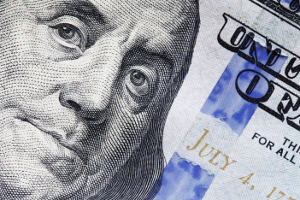 The Industry Council for Tangible Assets' Anti-Counterfeiting Task Force has reorganized one of its original work groups and added three new groups since its early August meeting prior
to the World's Fair of Money in Denver. Additionally, new members have joined the Steering Committee and work groups.
The Industry Council for Tangible Assets' Anti-Counterfeiting Task Force has reorganized one of its original work groups and added three new groups since its early August meeting prior
to the World's Fair of Money in Denver. Additionally, new members have joined the Steering Committee and work groups.
Scott Schechter, vice president and finalizer at Numismatic Guaranty Corp., has joined ACTF's Steering Committee and will also be a member of the Packaging and Security Work Group. Schechter replaces John Schuch II on the Steering Committee. Schuch will continue to work with ACTF as a member of two work groups, Education and Research.
The Research Work Group, one of ACTF's original eight work groups, now has a new team comprised of Scott Schwartz, Richard Weaver, and Schuch. Weaver, president of Delaware Valley Rare Coins, is new to the task force. The Research Work Group will focus its efforts initially on identifying, testing, and evaluating anti-counterfeiting technology.
Anti-Counterfeiting Director Beth Deisher said that dealers and collectors are asking which devices and technology are the best to use in identifying counterfeits. “There are a number of products available in the marketplace. Our Research Work Group will be testing them and issuing an advisory to provide practical guidance regarding the capabilities of the various products,” Deisher said.
The three new work groups have been established to work in areas that have risen in importance as the ACTF works with law enforcement at various levels. The three areas are ancient coins, paper money, and products of private mints.
Steering Committee member Dr. Ute Wartenberg-Kagan will lead the Ancients Work Group and will be joined by Mary Lannin, formerly a member of the Research Work Group, and David Hendin, a specialist in ancient Hebrew coins. The Ancients Work Group will provide expertise in identification of counterfeit ancient coins, identify historical areas of origin of genuine ancient coin types, and assist law enforcement in identifying methods of entry and distribution networks of counterfeit ancient coins within the United States
Paper money specialist Joseph Boling, formerly a member of the Research Work Group, will join Laura Kessler and Chad Hawk in the newly established Paper Money Work Group. Kessler is vice president of PCGS Currency and Hawk is a grader with Paper Money Guaranty. The Paper Money Work Group's charge will include assisting law enforcement by identifying methods of entry and distribution networks of counterfeit paper money in the United States. The work group's emphasis will be on counterfeit non-circulating U.S. paper money and counterfeit foreign paper money (due to the Secret Service's extensive resources that focus on counterfeit circulating U.S. paper money). It will also provide expert assistance to law enforcement in identification of counterfeit notes and counterfeit third-party grading holders.
The newly established Private Mints Work Group is comprised of leaders within the private mint sector in the United States. Members includeTom Power, president and CEO of Sunshine Mint; Eric Highsmith, vice president of asset strategies at the Scottsdale Mint; Bill Atalla, president of Northwest Territorial Mint/Medallic Art Company; and David Hendrickson, SilverTowne Mint. Power will join the ACTF Steering Committee and lead the work group, which will concentrate its efforts on providing product information on coins and bullion products manufactured by private mints in the United States to enable law enforcement to identify counterfeits of such products. It will also seek to educate private mint leaders about the importance of recordation in the Customs and Border Protection database and will liaison with Transport and Security Work Group to develop best practices standards to prevent infiltration of counterfeits of private mint produced coin and bullion products into commercial transport and storage facilities.
Formed in January 2017, the ACTF's mission is to educate law enforcement authorities and policy makers about the rising threat of counterfeiting, mobilize law enforcement to attack counterfeiters where they are most vulnerable, and provide expertise and other resources in the investigation and prosecution of counterfeiters and those involved at all levels of their distribution networks.
ACTF is totally funded through donations from businesses and individuals. For information about donating to support the work of the task force, click here or contact Beth Deisher at 567-202-1795; email beth.deisher@ictaonline.org. Make checks payable to ICTA Anti-Counterfeiting, P.O. Box 237, Dacula, GA 30019.
To read the complete article, see:
ACTF Reorganizes Research Group,
Adds Three Work Groups (http://www.ictaonline.org/index.php?option=com_content&view=article&id=205:actf-reorganizes-research-group--adds-three-work-groups&catid=26:news&Itemid=128)
MORE ON THE FRENT POLITICAL COLLECTION
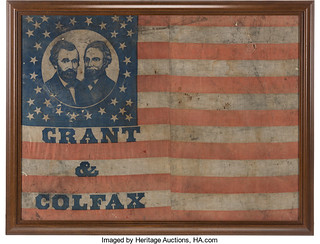 We sometimes talk about “single-owner” catalogs that exclusively feature items from a notable collection. The scope of some collections exceed the bounds of a single catalog and must be
sold in several installments. In the case of the “David & Janice Frent Collection of Presidential & Political Americana,” we are “tossing out the rule book” and planning a series of seven or eight
auctions, perhaps more. This is necessary by the fact that the Frent Collection is the largest and most valuable non-institutional collection of Political Americana ever assembled.
We sometimes talk about “single-owner” catalogs that exclusively feature items from a notable collection. The scope of some collections exceed the bounds of a single catalog and must be
sold in several installments. In the case of the “David & Janice Frent Collection of Presidential & Political Americana,” we are “tossing out the rule book” and planning a series of seven or eight
auctions, perhaps more. This is necessary by the fact that the Frent Collection is the largest and most valuable non-institutional collection of Political Americana ever assembled.
Dave & Janice, whom I have known personally for around 45 years, remind me of Chick & Ceil Harris. Like those two “pillars of the hobby,” Dave & Janice share an interest in preserving the artifacts associated with our political history. They both share a passion for American history and have worked in tandem, as a team, assiduously gathering material for their collection… going to auctions, antique shows, and regional & national hobby gatherings. They also benefitted from the dispersal of several old-time collections that came on the market from time-to-time. Their collection is “memorialized” in the two-volume set Running for President: The Candidates and Their Images edited by Arthur M. Schlesinger, Jr. (co-edited by Fred Israel and David Frent). The book contains chapters on each presidential election with a brief history of the campaign, accompanied by illustrations of items from the Frent Collection. It remains the finest book of its type, combining history with material culture.
The Frent Collection is somewhat of a “throw-back” to a more traditional time. While many collectors specialize in an era or candidate, the Frents assembled a general collection, covering all elections from 1789 to the present. All types of items are represented, ranging from “smalls” to large display pieces and “3-D”. There is depth and breadth across the board. What follows is a brief “sampling” or survey of the material to be offered in the first installment, our Political & Americana Auction #6181, on October 21st . Both Signature Session and Final Session lots will be offered at starting bids that are 50% of the estimated value, with a $100 minimum. Online bidding is scheduled to begin on or before October 2nd.
The most valuable item in the sale, in our opinion, is the huge Grant & Colfax jugate campaign flag/banner, measuring 47” x 34.5”. This is one piece that surely won't fall between the cracks. There are six flags in the sale. It will be a “Great Adventure”.
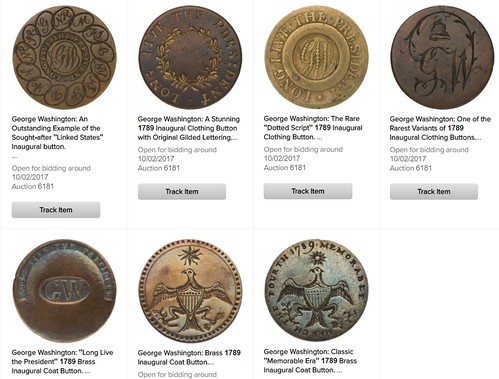
There are seven George Washington Inaugural buttons being offered, with more to come! The prettiest one, perhaps, is the 20 mm Laurel Wreath variety retaining all the original gilding in the recessed devices.
If tokens and medals “float your boat,” check out the large John Quincy Adams medal. It is a DeWitt #1 (JQA-1828-1) with the original silk ribbon attached. It's a toughie and much-prized.
We like the William Jennings Bryan “Silver Dollar” poster, issued in very limited numbers by a San Francisco Democratic organization. So limited, in fact, that this is the only one we've ever seen. It has great crossover appeal to numismatists, poster, and political buffs.
To read the complete newsletter, see:
Legendary Frent Collection Debuts on October 21
(https://historical.ha.com/heritage-auctions-newsletter/historical-news-legendary-frent-collection-debuts-on-october-21.s?id=5381)
To read the earlier E-SYlum article, see:
THE FRENT POLITICAL MEMORABILIA COLLECTION (http://www.coinbooks.org/v20/esylum_v20n36a24.html)
NUMISMATIC NUGGETS: OCTOBER 1, 2017
Libertas Americana Medal
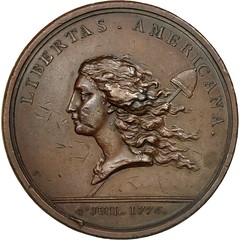
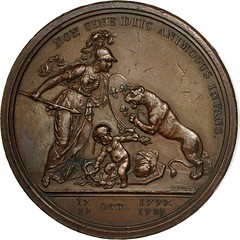
To read the complete lot description, see:
UNITED STATES, MEDAL, LIBERTAS AMERICANA, HISTORY, 1781, DUPRÉ, EF(40-45)
(https://www.numiscorner.com/products/united-states-medal-libertas-americana-history-1781-dupre-ef40-45)
1815 Napoleon Son Medal
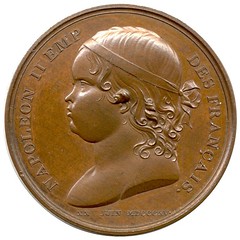
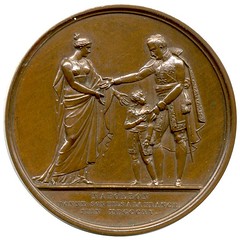
Description:
Obverse: NAPOLEON II EMP DES FRANCAIS - XX JUIN MDCCCXV, Head of Napoleon II facing left. Reverse: NAPOLEON/DONNE SON FILS A LA FRANCE/JUIN MDCCCXV., Napoleon in uniform gives his son to France.
Original issue !
Country: France
Reign: Napoleon
Denomination: Bronze Medal
Year: 1815
Grade: XF
Catalog Nr.:
Metal: Bronze
Weight: 40.2
Size: 41
To read the complete lot description, see:
France, Napoleon, Nice Bronze Medal 1815, Napoleon gives his son to France, XF
(https://www.thecoinhouse-auctions.eu/auctions/auction-3-30092017/651/)
1900 South Africa Boer War Medal
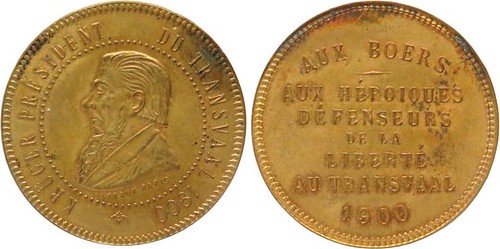
Description: SOUTH AFRICA.
Tribute medal relating to the Zuid Afrikaansche Republiek and the Boer War.
President Kruger, ZAR Medal by Cartaux.
Dimensions: 4.82 Grams. 37 mm.
Medium: Brass shells on cardboard.
Condition Report: About Uncirculated.
Literature: WORLD COINS AND MEDALS.
Notes: CMZAR.140.
Made in France, 5 Francs module size. RARE.
To read the complete lot description, see:
Lot 133: SOUTH AFRICA. Tribute medal relating to the Zuid Afrikaansche Republiek and the Boer War.
(https://www.invaluable.com/auction-lot/-1-c-15F4D959B6)
c.1915 WWI Medal Group
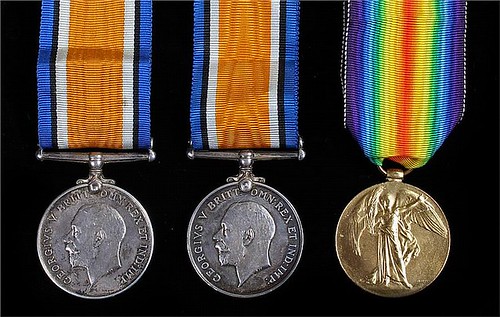
Description: First World War Family group, War medal and Victory medal (S.S. 107416 C. DEIGHTON L.STO R.N.) together with a War medal (5730 PTE. S. R. DEIGHTON. RIF BRIG.) Private Deighton was killed in action 25th September 1915, France & Flanders, (3)
To read the complete lot description, see:
Lot 890: First World War Family group, War medal and Victory medal (S.S. 107416 C. D
(https://www.invaluable.com/auction-lot/-1-c-395478B9D1)
1964 St. Louis Bicentennial Medal
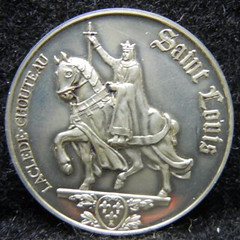

To read the complete lot description, see:
Lot 38: ST LOUIS BICENTENNIAL TOKEN (https://www.invaluable.com/auction-lot/-1-c-39B4C58B1B)
2013 Death Save the Queen Money Art
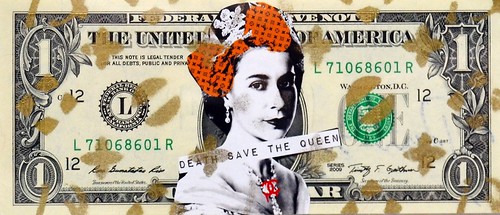
1 $ Death NYC original banknote - Street Art American Artist
Technique: Collage and mixed technique on banknote
Title of the work: " Queen O "
Single work, dated 2013.
Signed by the artist with black felt.
Dimensions: 6 x 15 cm
Comes with seal sticker and certificate of authenticity signed by the artist.
Brand new, never framed, direct from the artist.
Shipping protected and cared. Expedited from France.
To read the complete lot description, see:
Death NYC - Queen O ($ 1 Banknote), dated 2013 and signed
on the back - Unique work (http://www.lotprive.com/en/buy/contemporary-art/death-nyc-queen-o-1-banknote-dated-2013-and-signed-on-the-back-unique-work-407998)
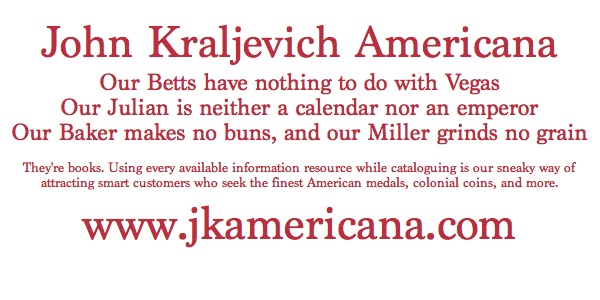
THE CROCODILE COINAGE OF NEMAUSUS
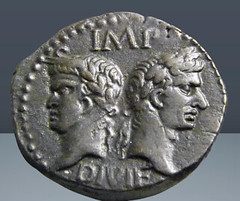
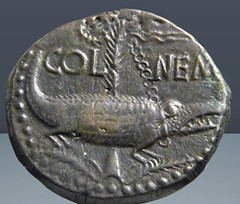
The crocodile coinage of Nemausus has delighted collectors for years. Research has shown that the coinage can be grouped into three distinct time periods based on the addition or omission of a headdress of some sort on the bust of Augustus. This coin was struck during the period after the death of Augustus c. 9/8-3 BC or during the reign of Claudius.
Nemausus was in the region of Gaul in modern day France (city of Nimes). Today, If one visits, there are still numerous references to this glorious coinage. The image of the crocodile chained to a post symbolized the subjugation of Egypt during the reign of Julius Caesar around 30 BC. The soldiers from this initiative were given plots of land to farm and quickly began to populate the city. The coinage served to memorialize the relationship to their new home. While Caesar inspired the coinage, Augustus created a major mint in the town of Nemausus and literally put the city on the map. This coinage was struck in abundance and served a large portion of the western Roman empire.
The meaning of the palm on the reverse is a matter of debate. Long before the Romans, the Volcae tribe dominated the area starting around the 3rd century BC. Pre-dating the Augustan coinage, there was already palm imagery, thus it could symbolize the relationship to the previous inhabitants.
The city enjoyed prosperity until the end of the 3rd century AD when it diminished in stature. The ruler Antoninus Pius (reigned 138-161 AD) came from Nemausus. In 473 AD the city was taken from the Romans by the Visigoths.
References: RIC I 158; RPC I 524; CRE Ashmolean 425 Grade: Good VF, brown patina with a few areas of green, light adjustment marks. Attractive for issue
To read the complete article, see:
Augustus with Agrippa. 27 BC-AD (http://www.shannaschmidt.com/coin-of-the-week/)
THE STAR AND CRESCENT ON ANCIENT COINS
Living in a world without electric lights, most ancient people were much more familiar with the night sky than we are, and the stars and planets were very important to their view of the universe. Many believed that events in the sky were closely linked to events on earth; a belief that developed into the pseudo-science of astrology. In Sumerian cuneiform writing, a star and crescent is the ideogram for “incantation” or magical spell.
At least four different Greco-Roman goddesses had a lunar connection: Hecate, Selene, Artemis (Diana), and Aphrodite (Venus). The star and crescent appears as a powerful symbol with many meanings, and it is often found on ancient coins.
Uranopolis and Byzantium
The small town of Uranopolis (“sky city”) in Macedon was dedicated to the sky goddess Aprhrodite Urania. On its bronze coins (c. 300 BCE), the goddess appears seated on a celestial globe. The star
and crescent are depicted on the reverse, in a pattern that will be repeated on coins for centuries to come: the “horns” of the crescent point upward, and the star is a pellet with six or eight
rays.
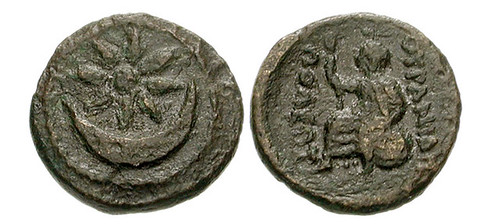
The Greek city of Byzantium (which would become Constantinople in 330 CE, and, Istanbul after 1453) adopted this symbol on its coinage in the first century BCE. According to legend, in 340 BCE, when Philip of Macedon (father of Alexander the Great) besieged Byzantium, the appearance of a sudden light in the sky warned the defenders in time to prevent a surprise night attack on the walls. In gratitude to the lunar goddess Hecate, the city placed a star and crescent on its local coinage. This custom continued well into the Roman era.
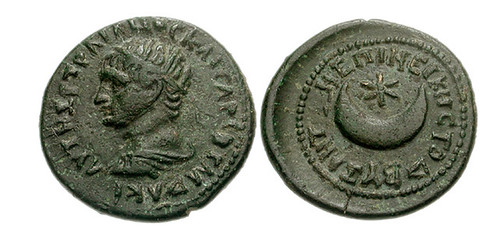
Roman Imperial
Many Roman emperors took astrology seriously; some even employed court astrologers. Beginning with the first emperor, Augustus, the crescent symbol with one or more stars appears repeatedly on the
coinage, probably at times when significant lunar events were observed and taken as favorable omens.
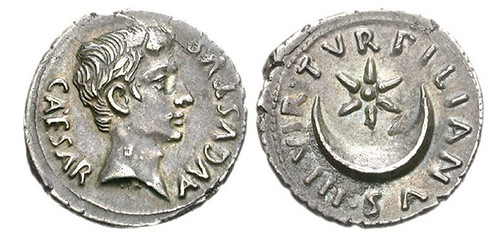
To read the complete article, see:
The Star and Crescent on Ancient Coins (http://coinweek.com/ancient-coins/star-crescent-ancient-coins/)
THE COLONIAL FRENCH SOL OF 1767
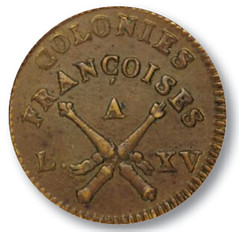
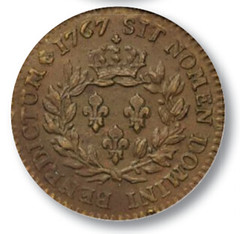
Among the coins listed as “Colonial Issues” in R.S. Yeoman's Guide Book of United States Coins (the “Red Book”) is a 1767 piece struck for France's colonies by the Paris Mint. Usually found with an oval counterstamp bearing the letters “RF,” it is an interesting coin for several reasons. Much more can be said about it than is mentioned in the Red Book, which states simply that the piece was made for use in the French colonies and unofficially circulated in Louisiana, along with a variety of other coins and tokens. This copper sol (equal to 12 deniers and later called a sou) was roughly comparable to a U.S. large cent in purchasing power.
Sol Story The sol originally was issued in 1767 to replace old billon coin - age (which contained a copper/ silver alloy with less than 50- percent silver) that circulated in various French colonies, including several Caribbean islands. With a weight of 12.2g and a diameter of 29mm, the sol was roughly the size of a U.S. large cent.
The obverse shows crossed scepters, representing justice and French sovereignty. The legend COLONIES FRANÇOISES L(UDO VI CUS) XV indicates the piece was produced for the French colonies of King Louis XV. The reverse bears three fleur de lis within a crowned wreath and the date 1767. The surrounding Latin legend SIT NOMEN DOMINI BENEDICTUM translates “Blessed is the Name of the Lord.”
Surviving documentation suggests that only a fraction of the 1.6 million sols minted were issued at that time. In 1767 citizens of the colony of Guadeloupe rejected the issue, and it did not circulate.
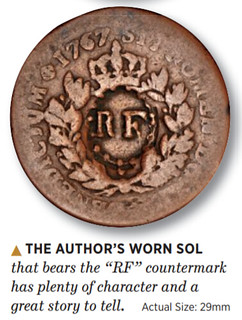 Years later, in 1793, the governor of Guadeloupe, Georges Collot, requested the remaining sols for use on his island. The French government countermarked the coins with the letters “RF,”
for “Republique Fran çaise” in recognition of the nation's new republican government, and sent them to the colony.
Years later, in 1793, the governor of Guadeloupe, Georges Collot, requested the remaining sols for use on his island. The French government countermarked the coins with the letters “RF,”
for “Republique Fran çaise” in recognition of the nation's new republican government, and sent them to the colony.
No doubt some sols found their way to New Orleans, along with a variety of other Caribbean coinage, but they never were officially authorized for use there or intentionally imported in large quantities. A number of them might have been brought in by travelers and sailors, but the same could be said for almost any coin that circulated in the Caribbean, such as a 1740 skilling of the Danish West Indies or a countermarked coin of Martinique. Louisiana was not a French territory in 1767 nor in 1793, when these coins were issued. No part of Canada was French during their use (except for the tiny islands of Saint Pierre and Miquelon, which are French to this day).
In a U.S. colonial collection, it would be far more justifiable to incorporate British half pence, Spanish silver, half joes (Brazilian 6,400 reis) and other coins common in the colonies and early states rather than this 12 deniers. Sadly, although the sol is an interesting coin with a fascinating history, its status as a U.S. colonial issue is no more justified than many other circulating European coins of its day. However, that does not detract from its appeal.
For more information about the American Numismatic Association, see:
www.money.org
ROYAL MINT TO RELEASE ISAAC NEWTON 50P COIN
 A NEW Sir Isaac Newton 50p is being released this week and could become one of the rarest coins in circulation, as the Royal Mint celebrates the 375th anniversary year of the
scientist's birth.
A NEW Sir Isaac Newton 50p is being released this week and could become one of the rarest coins in circulation, as the Royal Mint celebrates the 375th anniversary year of the
scientist's birth.
Just 375 of the 50ps will initially be released, before thousands more will be minted and available in change across the country.
The 50p is a tribute to Newton's work in the fields of physics and astronomy and features a design is based upon elements of Proposition 11, in Book One of Newton's Principia Mathematica.
The Royal Mint has not yet confirmed how many of the new silver coins will be in circulation, and said it will depend on demand.
The Kew Gardens 50p, released in 2009, is one of the rarest 50ps in circulation and now sells for hundreds of pounds on eBay.
Coin collectors hoping to get the new 50p first need to head to Woolsthorpe Manor, Lincolnshire, the place of Sir Isaac Newton's birth, as they are released into the tills this week - or hope to find one in their change over the coming months.
Commemorative editions of the coins in gold, silver and collectable ‘Brilliant Uncirculated' finishes will also be available from the gift shop at Woolsthorpe Manor, as well as direct from The Royal Mint website.
Anne Jessopp, The Royal Mint's director of consumer coin said: “As well as undertaking pioneering work in the fields of physics and astronomy – work for which he is widely known - Isaac Newton was also Master of The Royal Mint for three decades, so we couldn't think of a better place to issue a special release of these coins than Woolsthorpe Manor, Newton's birthplace.”
To read the complete article, see:
New Sir Isaac Newton 50p coins released into circulation - will
it be rarest 50p? (http://www.express.co.uk/finance/personalfinance/858831/Rare-50p-Isaac-Newton-new-coins-2017-valuable-circulation-worth-money)
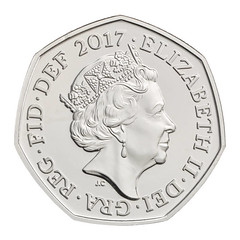
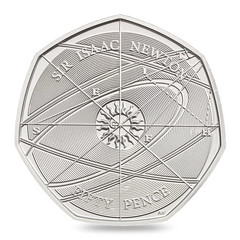
For more information, or to order, see:
Sir. Isaac Newton 2017 UK 50p Brilliant Uncirculated Coin (http://www.royalmint.com/shop/u/uk17inbu)
Newton was born at Woolsthorpe Manor near Grantham in 1643 and became Master of the Mint in 1699.
A report he produced in 1717 helped to establish gold coin as the pre-eminent currency of the UK, paving the way for the introduction of the "gold standard".
David adds:
It is a good design and interesting subject. I suspect that not many will be put in circulation and it will become a rarity.
To read the complete article, see:
Newton coin goes into shops at Woolsthorpe Manor birthplace (http://www.bbc.com/news/uk-england-lincolnshire-41401177)
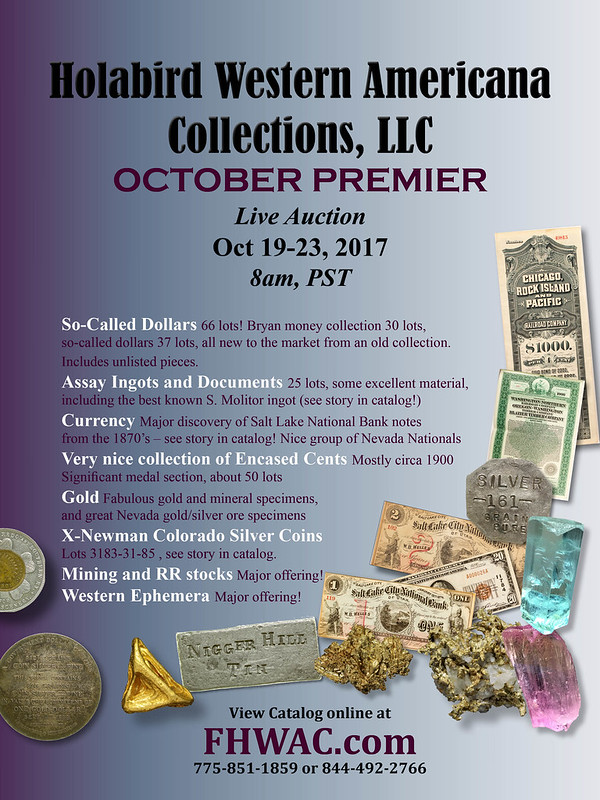
CURRIE CANADIAN VICTORIA CROSS SOLD
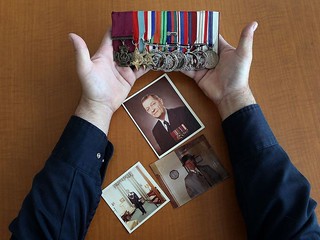 The private UK collector who paid $550,000 for the Victoria Cross awarded to Canadian Lt. Col. David Currie during the Second World War has plans to take the medal out of Canada.
The private UK collector who paid $550,000 for the Victoria Cross awarded to Canadian Lt. Col. David Currie during the Second World War has plans to take the medal out of Canada.
The unnamed buyer bought Currie's VC and an assortment of other medals and memorabilia on Wednesday at a public sale at London auction house Dix Noonan Webb. They buyer must also pay a 20 per cent seller's commission, pushing the total price to $660,000.
The Canadian War Museum took part in the Wednesday's auction.
“We participated in the auction, but we were not the successful bidder,” said Yasmine Mingay, director of public affairs for the museum.
The auction house said Wednesday the buyer intends to apply for a Canadian Cultural Property Export Permit, which is needed before the medals would be allowed to leave Canada.
Currie, of Sutherland, Sask., was a major in the the 29th Armoured Reconnaissance Regiment (The South Alberta Regiment), when he landed in France a few weeks after the D-Day invasion. In August 1944, Allied forces had encircled tens of thousands of German soldiers in an area known as the Falaise Pocket. Currie was given a handful of tanks and supporting infantry and ordered to seal a gap in the Allied lines to cut off the Germans' escape.
The Canadians held the line, killing and wounding 800 enemy soldiers and taking 2,100 more prisoner.
“Throughout three days and nights of fierce fighting, Major Currie's gallant conduct and contempt for danger set a magnificent example to all ranks of the force under his command,” his Victoria Cross citation read.
Currie died in Ottawa in 1986. In 1989, his widow, Isabel, sold the VC to a private collector in Canada. That collector cared for them until this summer when he decided to put it up for auction.
Once the export permit is applied for, the Department of Canadian Heritage will set a period of between two and six months in which a Canadian buyer or institution will have a chance to buy the medals. If no one does, the buyer will be allowed to take the medals outside Canada.
“In that time it becomes incumbent upon them to find a Canadian buyer who is prepared to pay that price,” Ursual said.
To read the complete article, see:
UK buyer bids $550,000 for historic Currie Victoria Cross at auction
(http://ottawacitizen.com/news/local-news/uk-buyer-bids-550000-for-historic-currie-victoria-cross-at-auction)
To read the earlier E-Sylum article, see:
CURRIE CANADIAN VICTORIA CROSS TO BE SOLD (http://www.coinbooks.org/v20/esylum_v20n35a26.html)
BAHAMAS UNVEILS NEW ONE DOLLAR NOTE
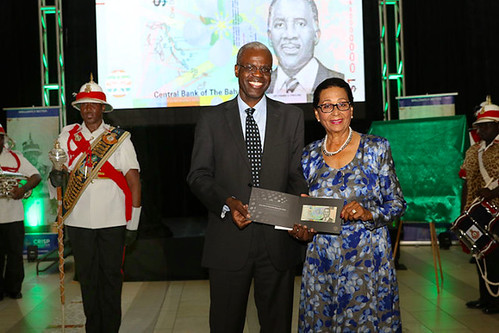
The Governor General Her Excellency Dame Marguerite Pindling attended the official Unveiling of Series 2017 CRISP Evolution One Dollar Banknote in the Gardens of LPIA, September 27, 2017. The Governor General holds a commemorative issue of the banknote, in the photograph, along with Governor of the Central Bank John Rolle. In the audience was Deputy Prime Minister and Minister of Finance the Hon. Peter Turnquest.

To read the complete article, see:
The Governor General attends Official Unveiling of
One Dollar Banknote (http://www.thebahamasweekly.com/publish/bis-news-updates/The_Governor_General_attends_Official_
Unveiling_of_One_Dollar_Banknote55734.shtml)
VEGAN RESTAURANT ACCEPTS ANIMAL FAT BANKNOTES
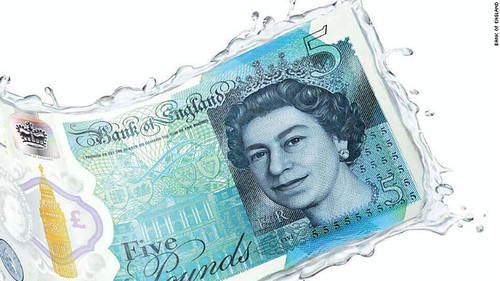
The owner of a vegan restaurant has been forced to lift her ban on animal fat banknotes.
Following the introduction of the new £10 note last week Rachael Phoenix, who owns Voltaire in Bangor, has changed its policy on accepting the money.
It was last year, after it was announced the new £5 notes contained tallow, a type of animal fat, Rachel banned the note from her eatery.
This was well received by customers but this month saw the new tenner launched, which also includes animal fat.
Rachael said that they have now decided to lift the ban on both notes, The Daily Post Wales reports.
She said they had made their point and did not want to cause “confusion or embarrassment” to their customers.
To read the complete article, see:
Vegan restaurant explains why it will now accept animal fat banknotes
(http://www.liverpoolecho.co.uk/news/liverpool-news/vegan-restaurant-explains-now-accept-13680556)
To read earlier E-Sylum articles, see:
NEW POLYMER NOTES CONTAIN ANIMAL FAT (www.coinbooks.org/esylum_v19n49a29.html)
MORE ON ANIMAL FAT IN THE POLYMER BANKNOTES (www.coinbooks.org/esylum_v19n50a34.html)
BLOG: VEGANS GO OVERBOARD WITH POLYMER NOTES (http://www.coinbooks.org/v20/esylum_v20n03a23.html)
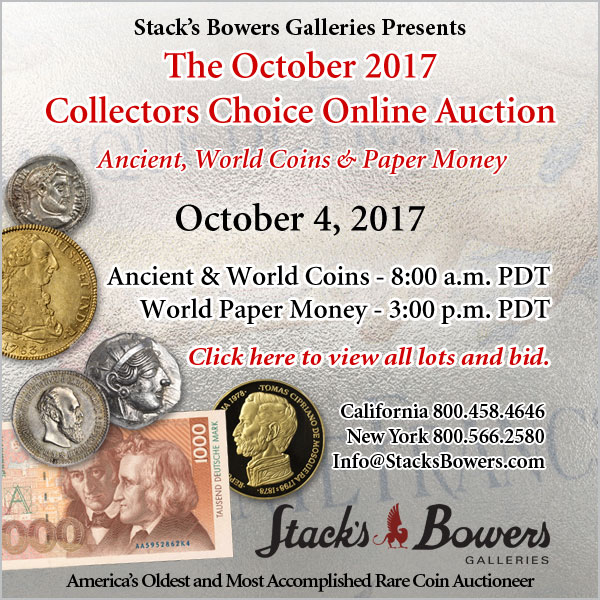
FEATURED WEB SITE: RUSSIAN COINS CATALOG
This week's Featured Web Site is the Russian Coins Catalog, courtesy of Yuriy Trach. Thanks!Russian coins catalog is a multipurpose tool that would be useful for collectors, treasure hunters and traders engaged in Russian numismatics. With the help of our portal users will are able to define approximate value of the coin they're interested in. The prices of the Russian coins as well as the coins of other countries are formed at the auctions. The official dates of the public and internet auctions are registered in the catalog. All the coins are separated according to the Governors, dates, types and varieties.
The purpose of the catalog is accumulation and presentation of the information on the coin sales. The catalog data and pictures come from the official sources. If you can not define the price yourself, our experts will be able to perform evaluation using the picture or in the office. We hope that our portal will become a useful tool to orientate on the Imperial Russian coins market. The links to upcoming and completed numismatic auctions where the Russian coins are being sold are published at the main page of our portal.
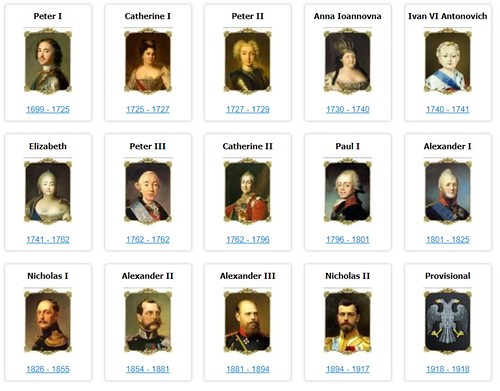
https://www.m-dv.ru/en/catalog/

